Pacific Crest Trail - Day 81 - Mather Pass
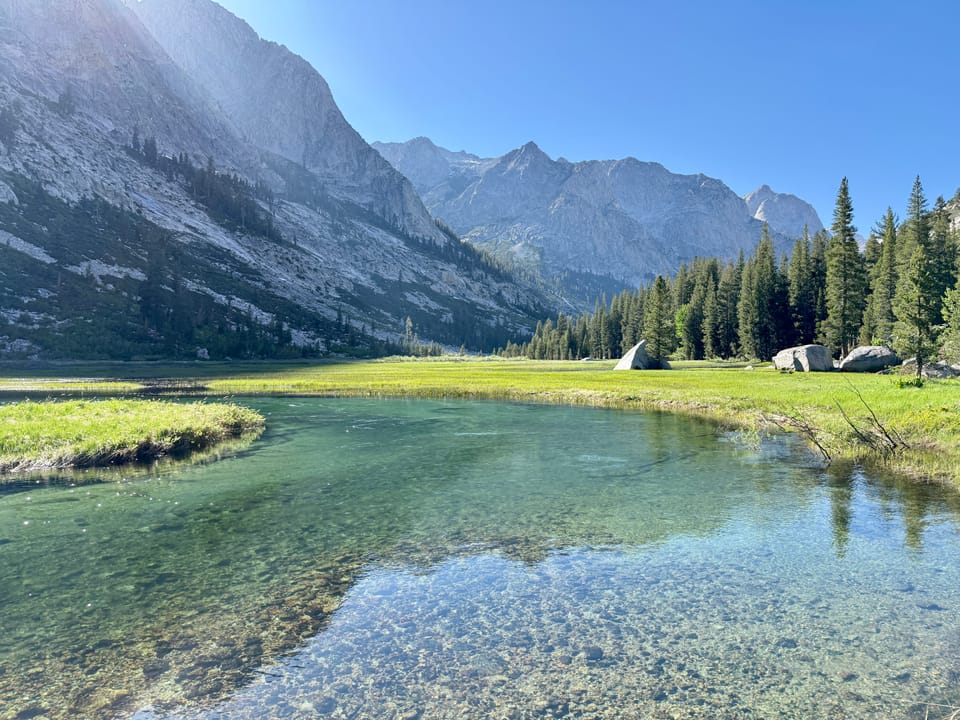
Start: Mile 815.0 - Backcountry campsite
End: Mile 831.7 - Backcountry campsite
Mather Pass was named after Stephen Mather, who became the first director of the National Park in 1917 following a response by Secretary of the Interior Franklin K. Kane to a letter he wrote that read:
"Dear Steve, If you don't like the way the parks are being run, come on down to Washington and run them yourself."
Imagine that. What an America it was where you could write a letter, have it read by the desired recipient, and receive the opportunity of a lifetime in a personalized response. Mind boggling.*
Stephen Mather went on to be perhaps the greatest advocate for visitation to the National Parks, and based much of his thinking about visitation and experience around the automobile. Nearly every road through a National Park that you remember fondly can be traced back to Stephen Mather and the National Park-to-Park Highway project laid out to connect the National Parks with an auto-trail.
Perhaps the most classic National Park view from one of these roads is from Tunnel View in Yosemite, named not for the tunnel formed by one of the most spectacular canyons on earth, but for the 4,233 foot long Wawona Tunnel you drive through before being awestruck upon exiting it.
Here’s Ansel Adams‘ shot from Tunnel View:
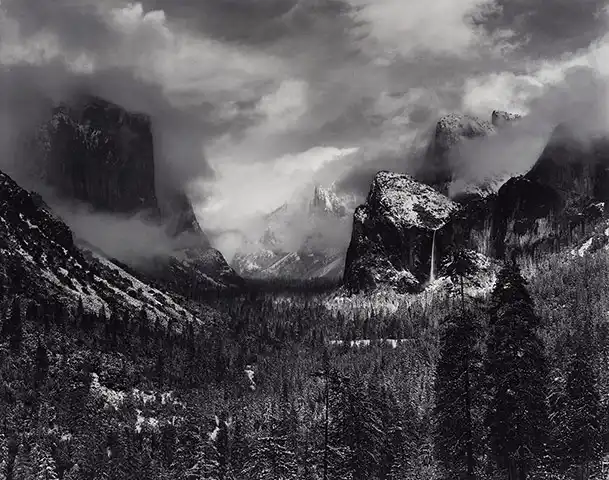
While the automobile and roads through the parks enabled visitation at immensely increased numbers, subsequent park directors began to re-evaluate introducing cars, roads, and traffic to places meant to be preserved. Here’s National Park Service Director George Hartzog in 1964:
The automobile as a recreational experience is obsolete, we cannot accommodate automobiles in such numbers and still provide a quality environment for a recreational experience . . . . No more roads will be built or widened until alternatives are explored. We want to give a park experience not a parkway experience .... The National Park Service must not be obligated to construct roads, or to manage traffic, in order that new kinds of mobile camping vehicles be accommodated. The development of parking areas for trailers at park-entrances, and the exclusion of vehicles from park roads not capable of handling them, are appropriate solution.
If you’ve ever attempted to drive through the Zion-Mt. Carmel Highway and Tunnel, you probably waited multiple times to allow an RV to pass through and can surmise whether Hartzog was successful at excluding vehicles from park roads not capable of handling them. Hartzog’s sentiments have been realized however by Zion National Park largely excluding automobile traffic while adopting a shuttle system to transport visitors between points of interest and trailheads.
While you can probably guess my position on automobile traffic in our most sacred places, I’ll quite Edward Abbey from Desert Solitaire:
You can't see anything from a car; you've got to get out of the goddamn contraption and walk, better yet crawl, on hands and knees, over the sandstone and through the thornbrush and cactus. When traces of blood begin to mark your trail, you'll see something, maybe.
Ken Burns‘ excellent documentary on the National Parks goes into depth about Stephen Mather and his contributions to popularizing and expanding the profile of America’s National Parks.
* I‘ve written many letters to my representatives in my better years, but have since regressed to calling Mark Amodei (or far more likely, some poor social media aide whose probably like the 2022 Elko High Salutatorian or something) a weaselly little rat dick via Instagram message which by Nevadan standards is a polite reserved response to someone hell bent on defiling our public lands.

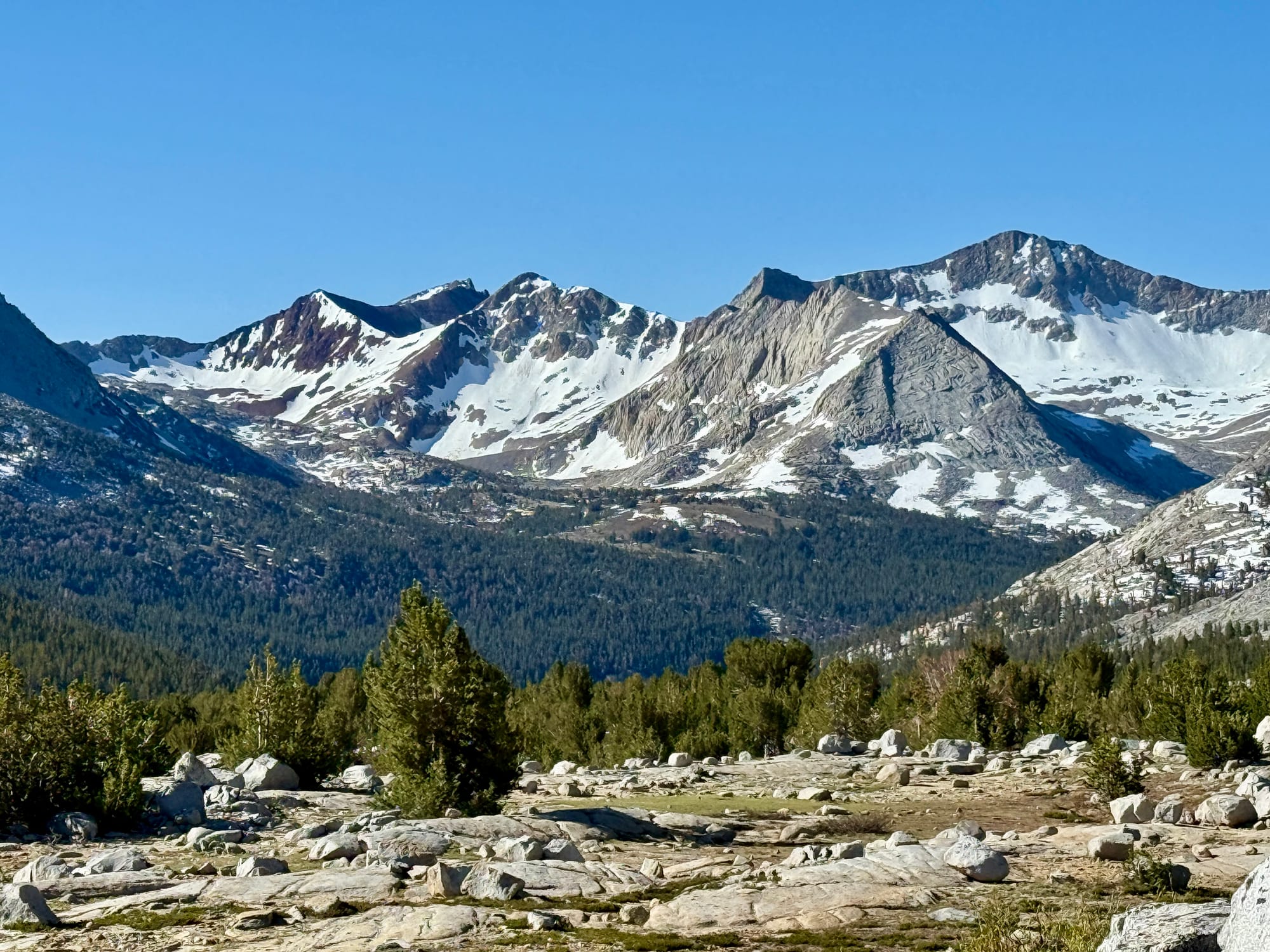


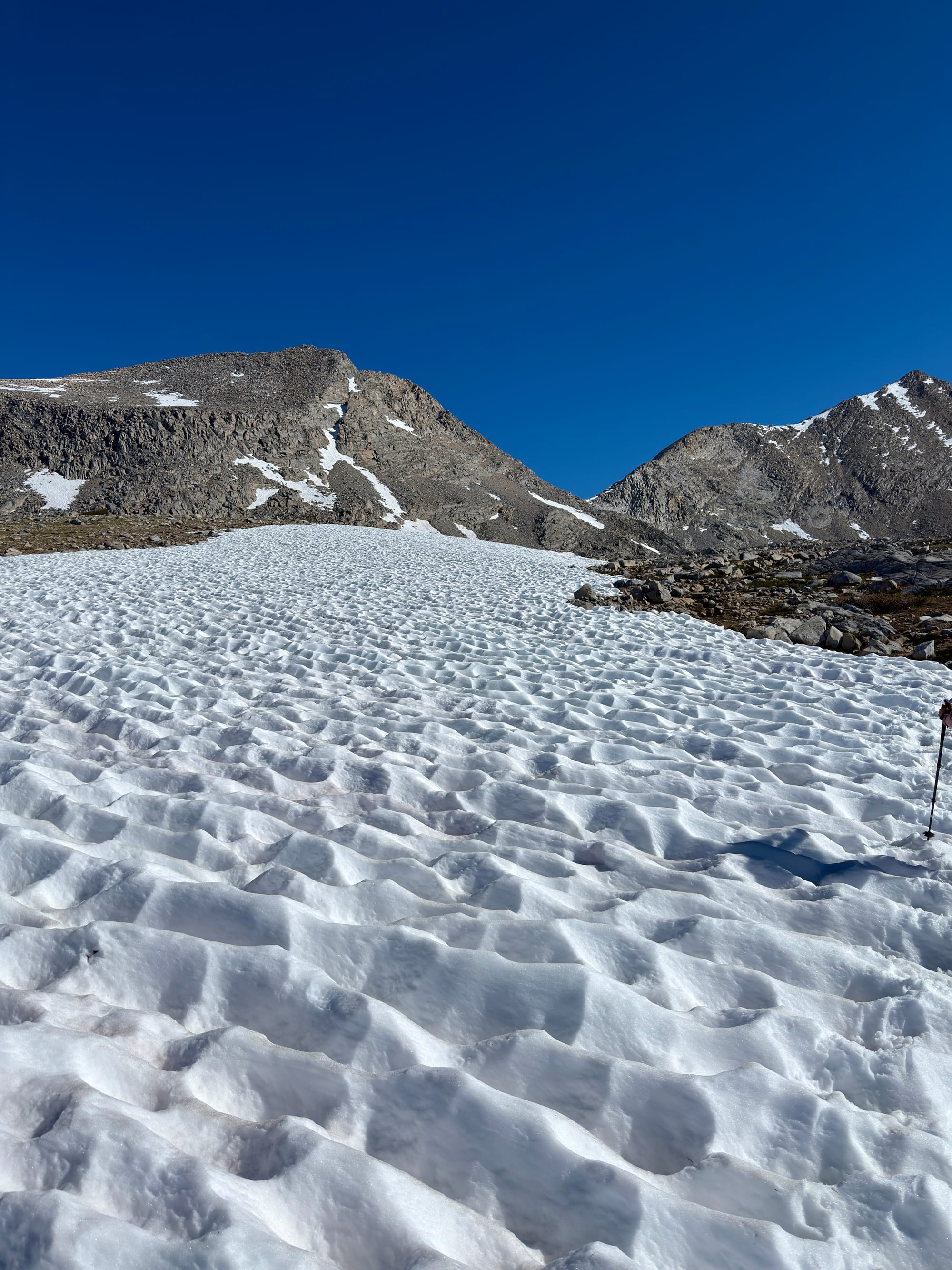
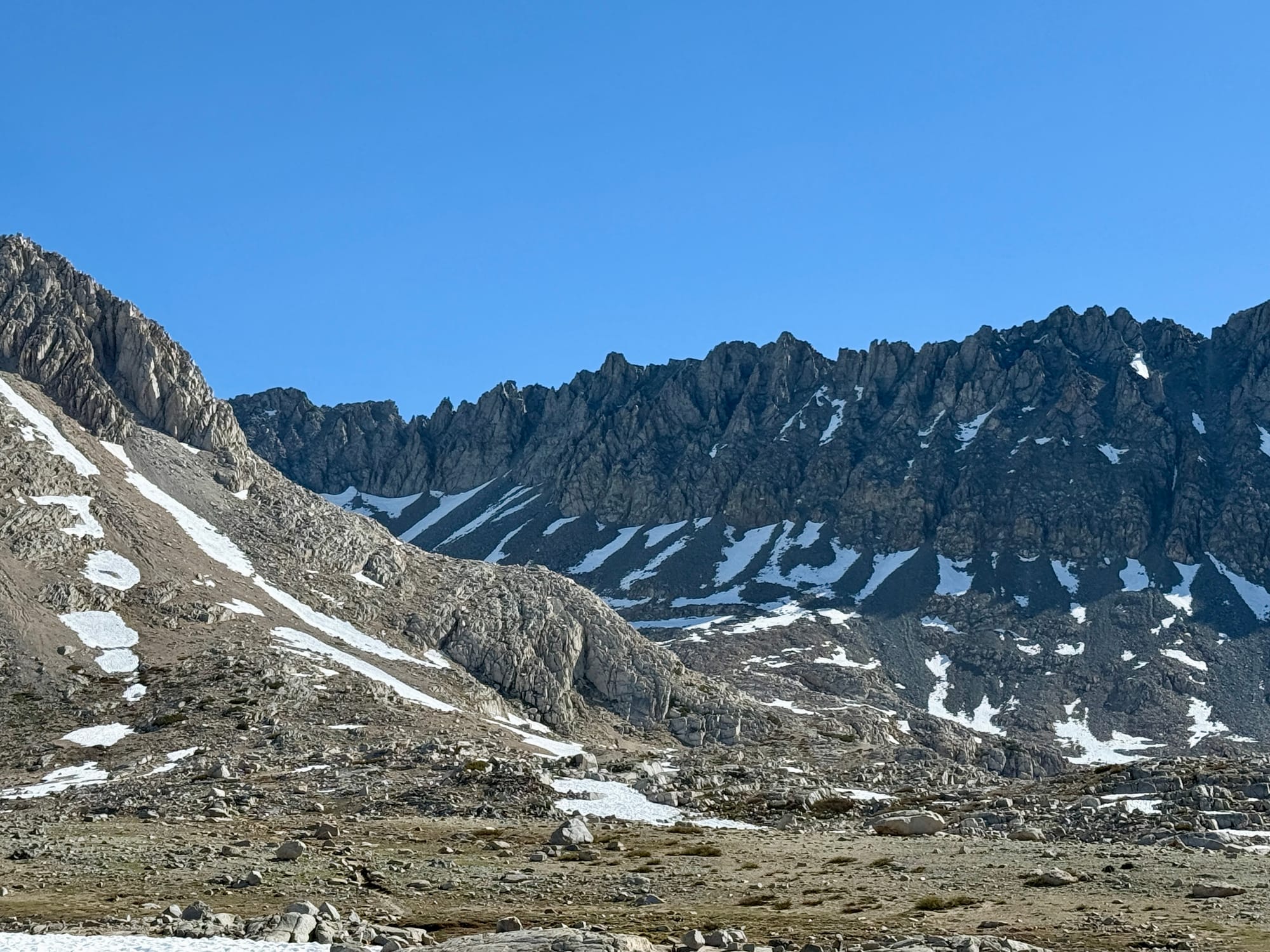
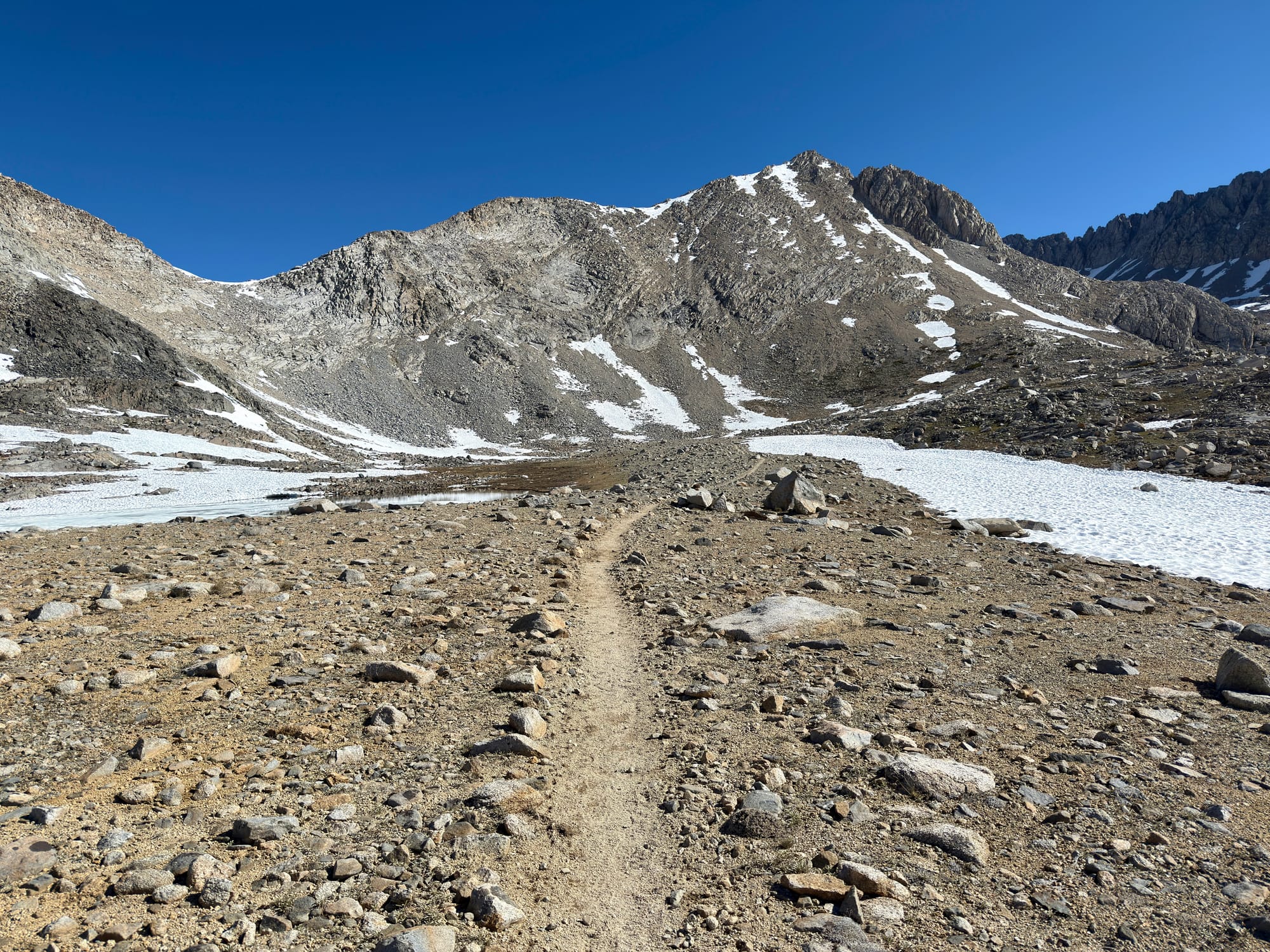
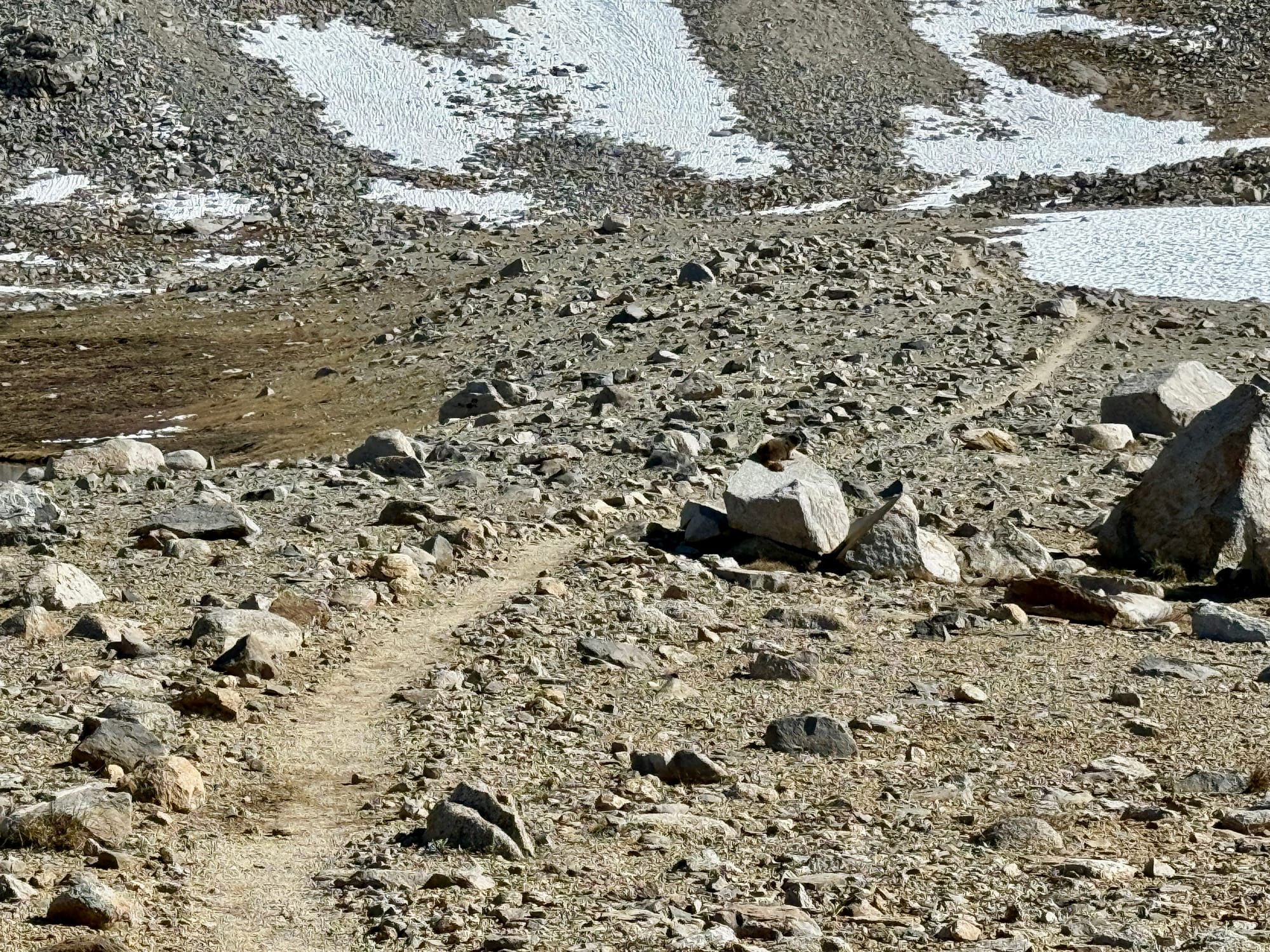
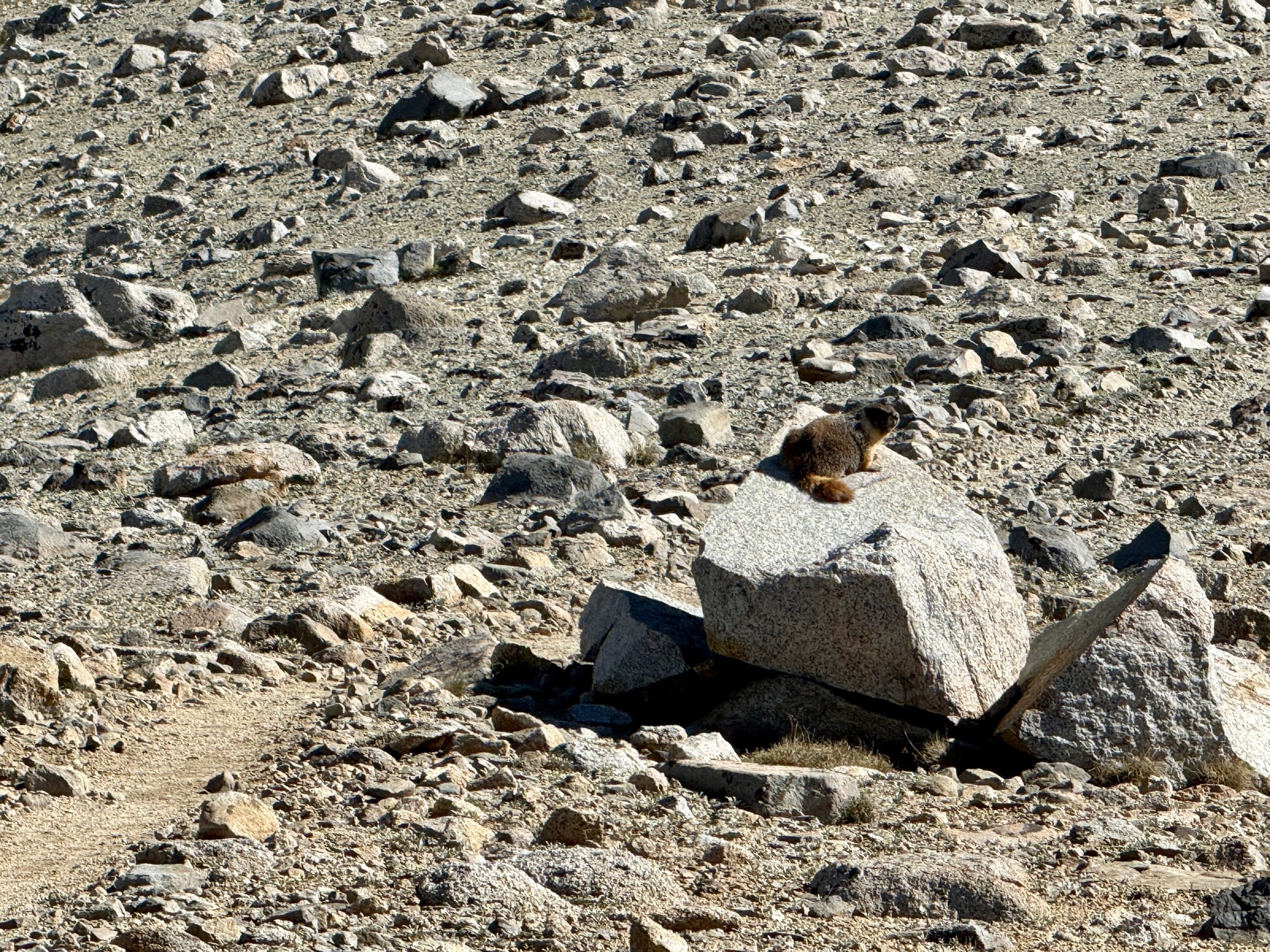
Marmot DNGAF.
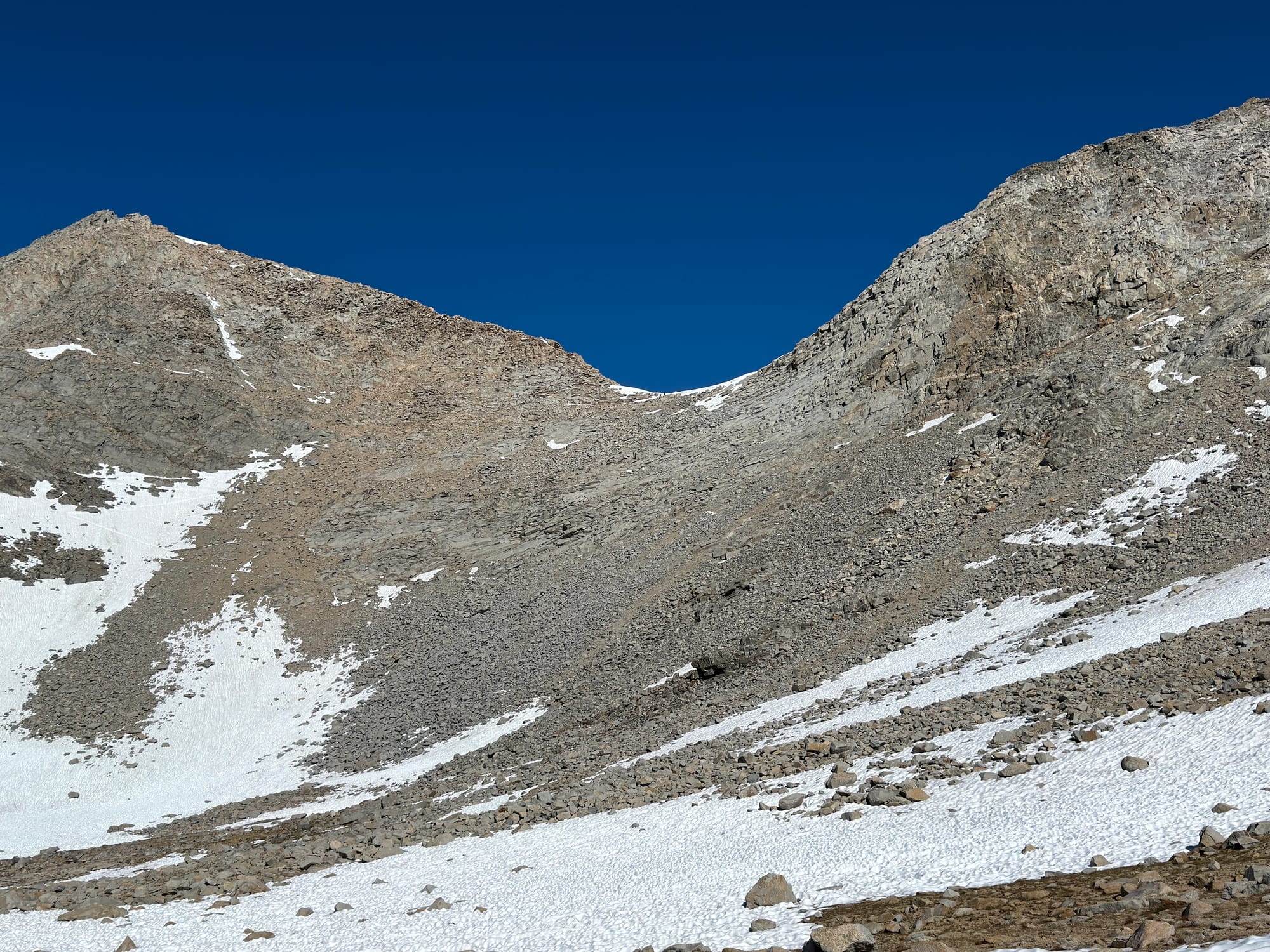
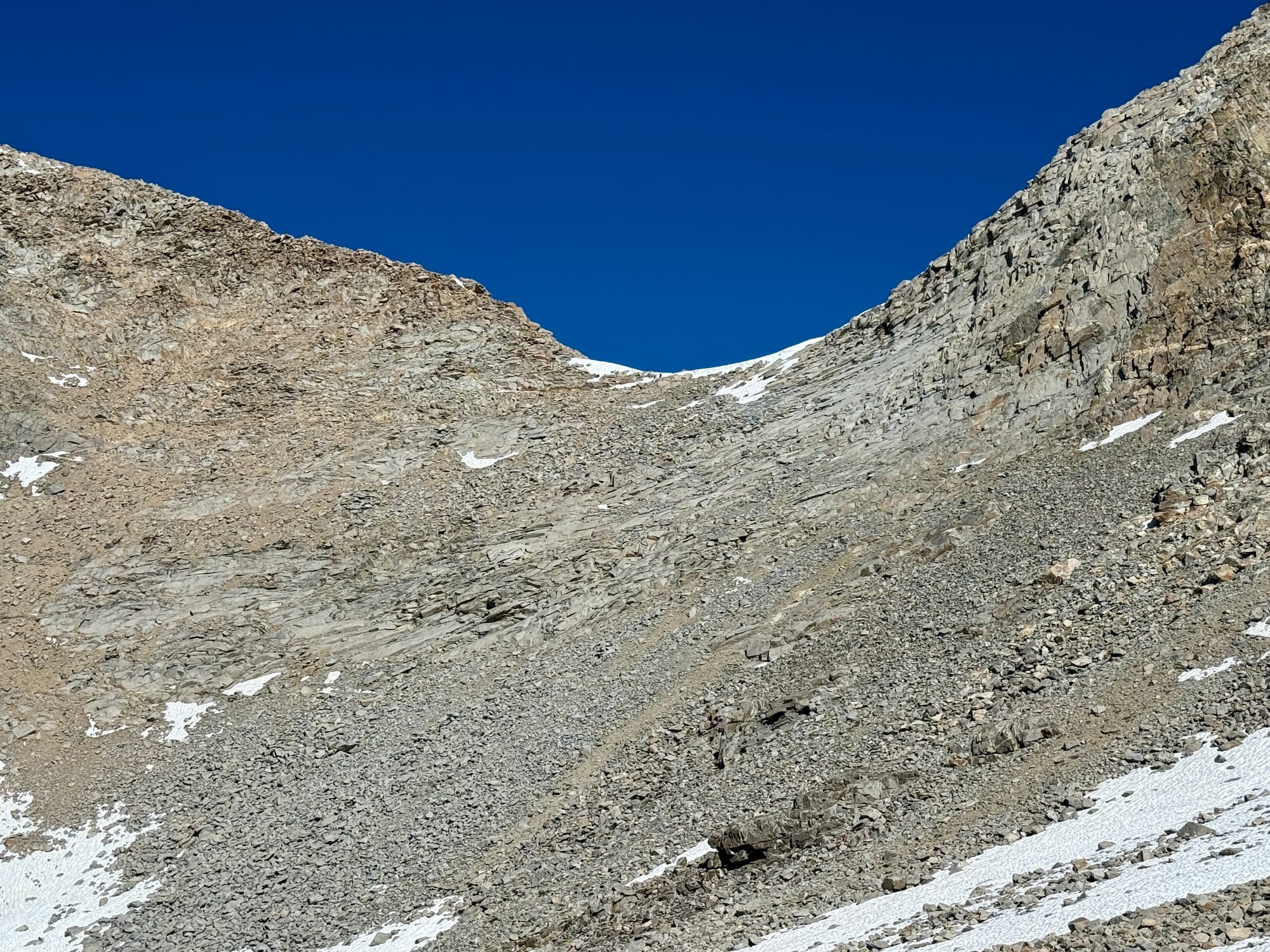
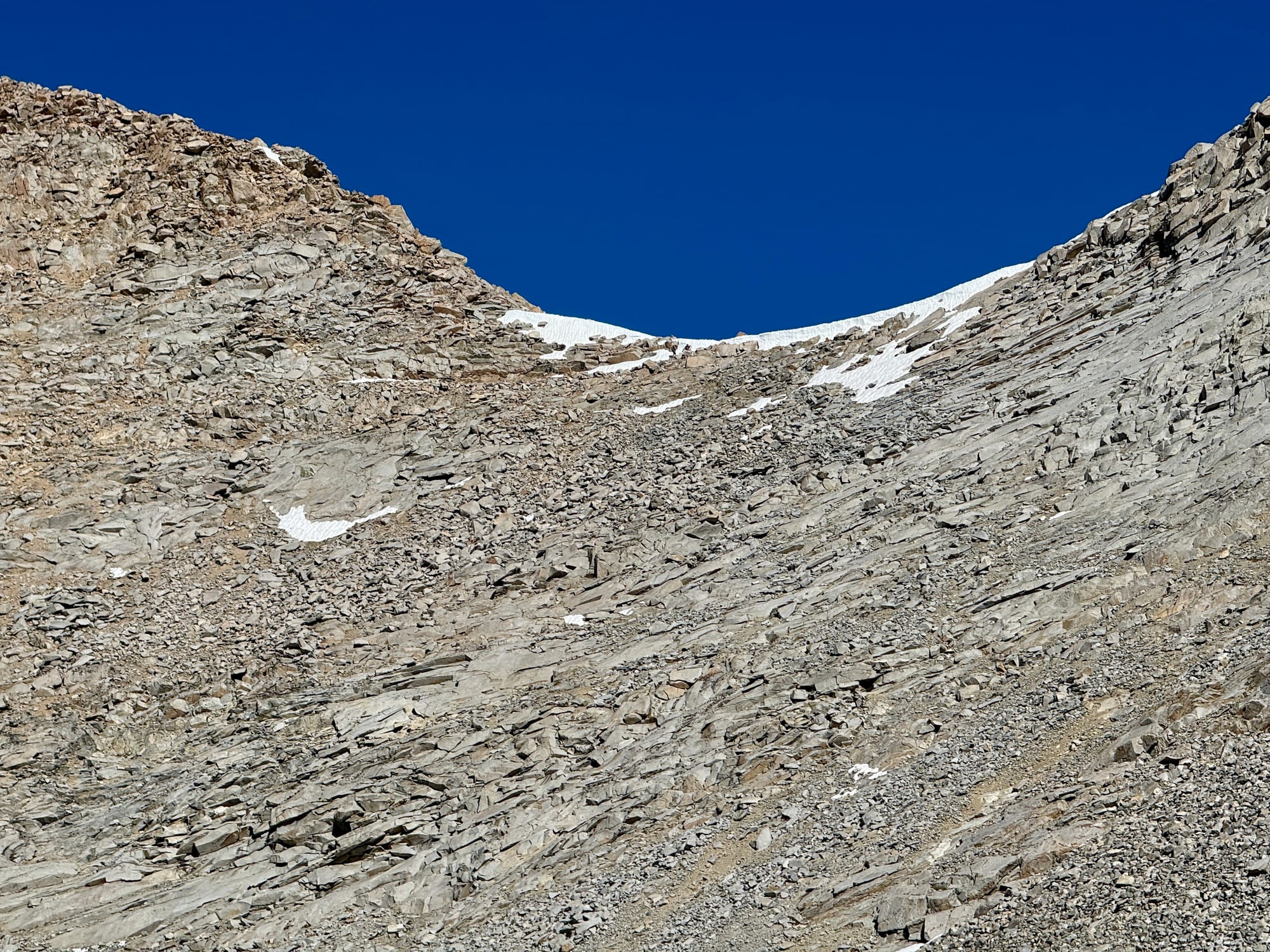

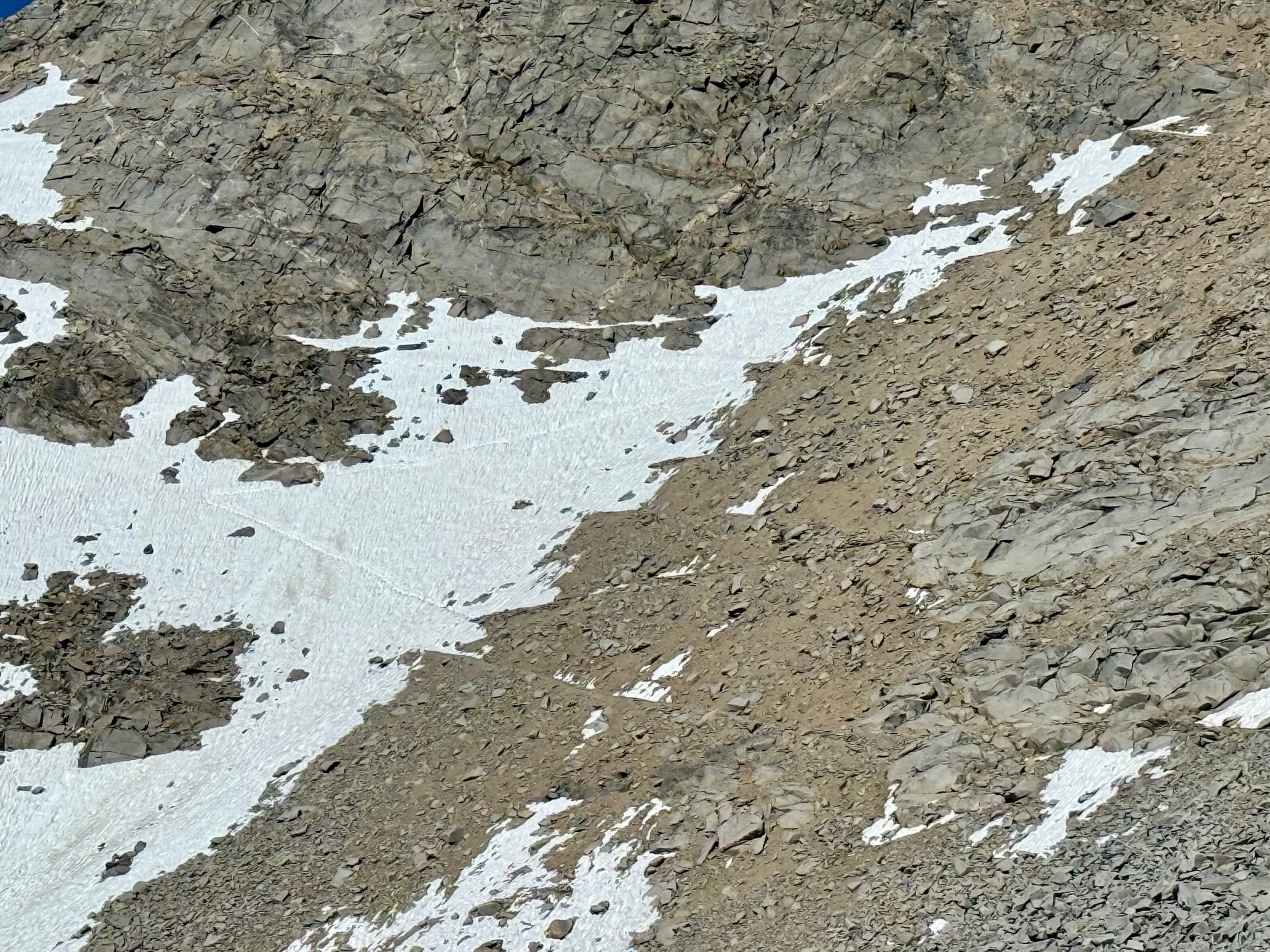
Snow traverse switchbacks cutting off trail switchbacks ahead.
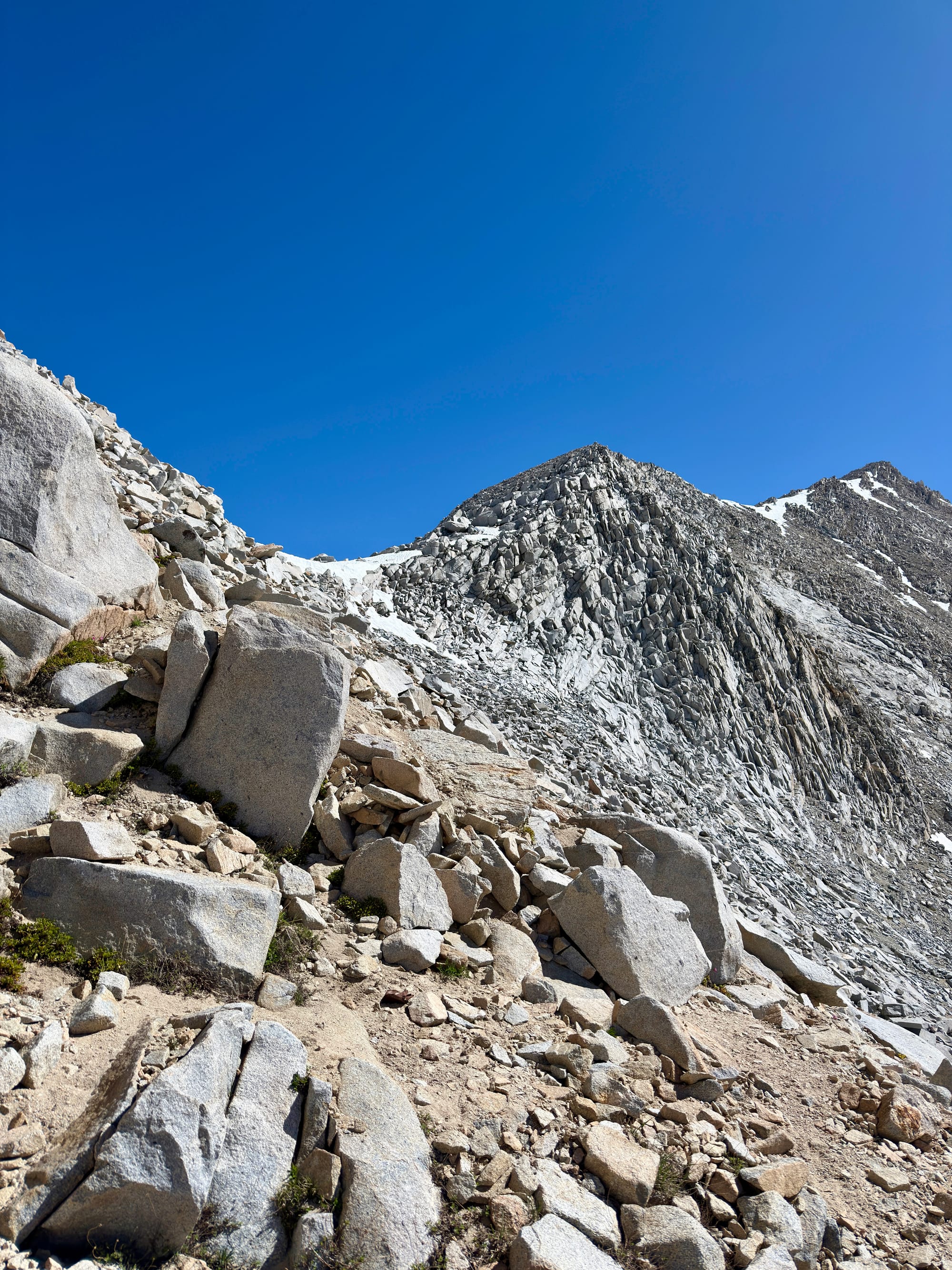
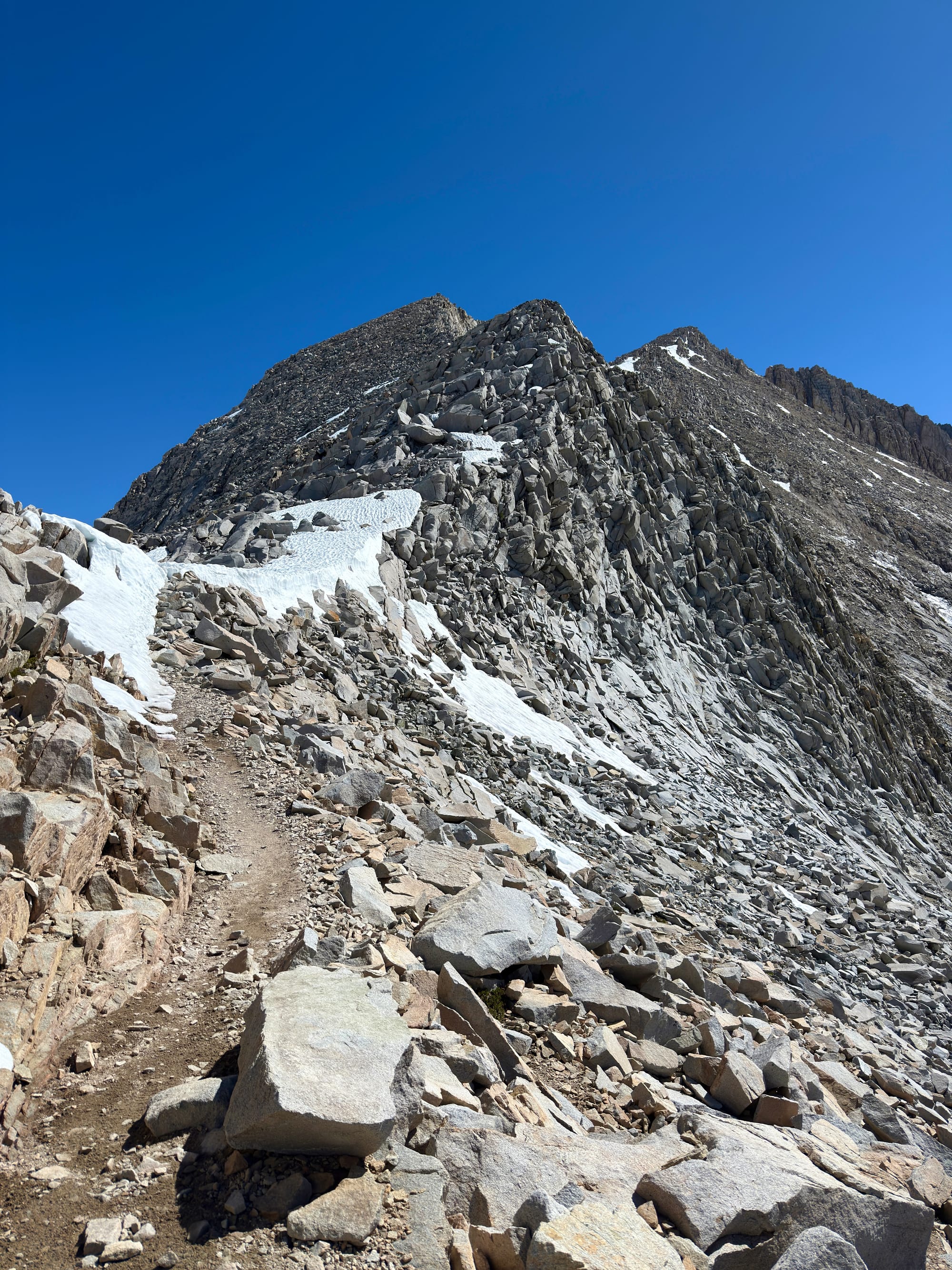
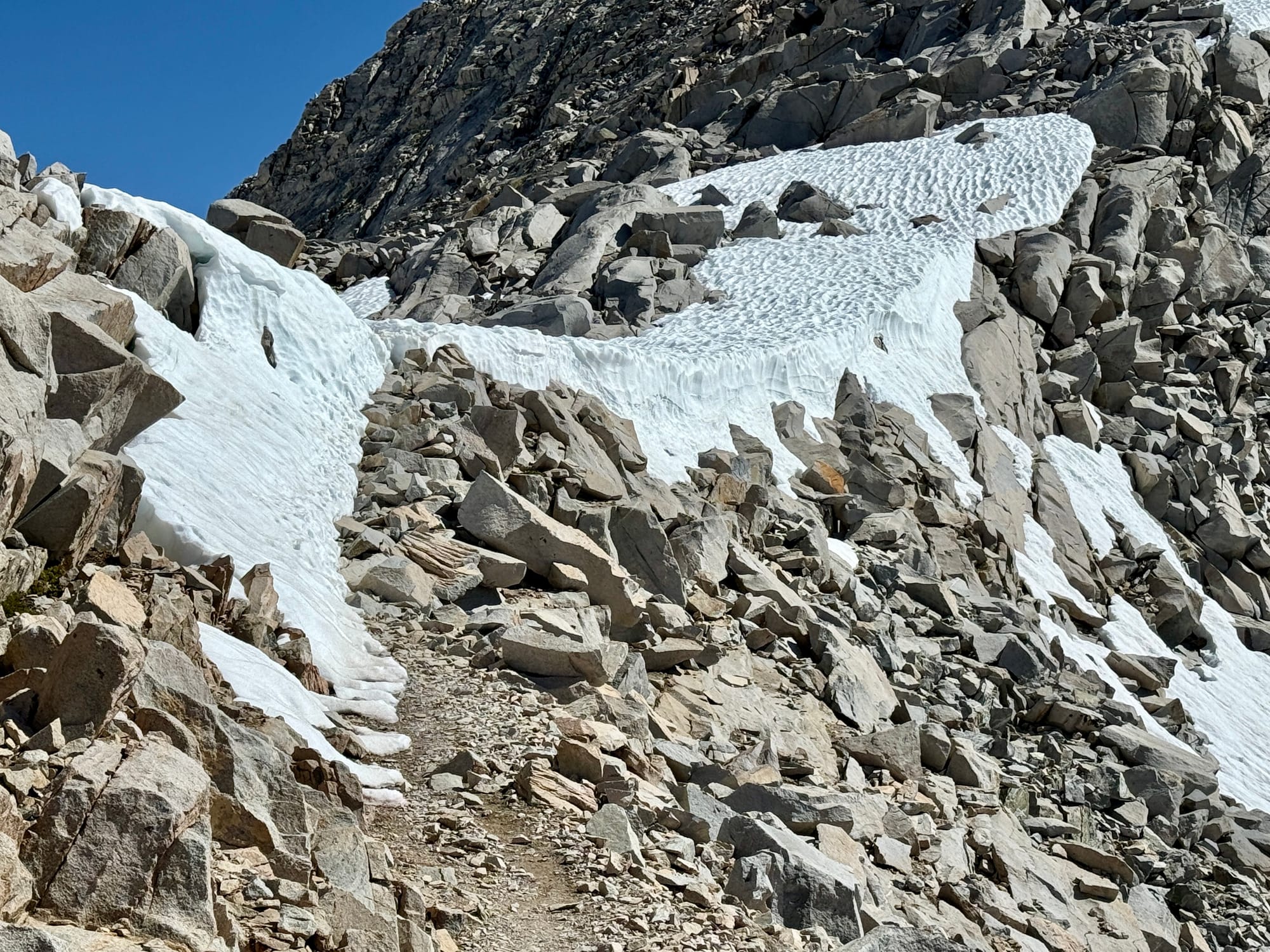
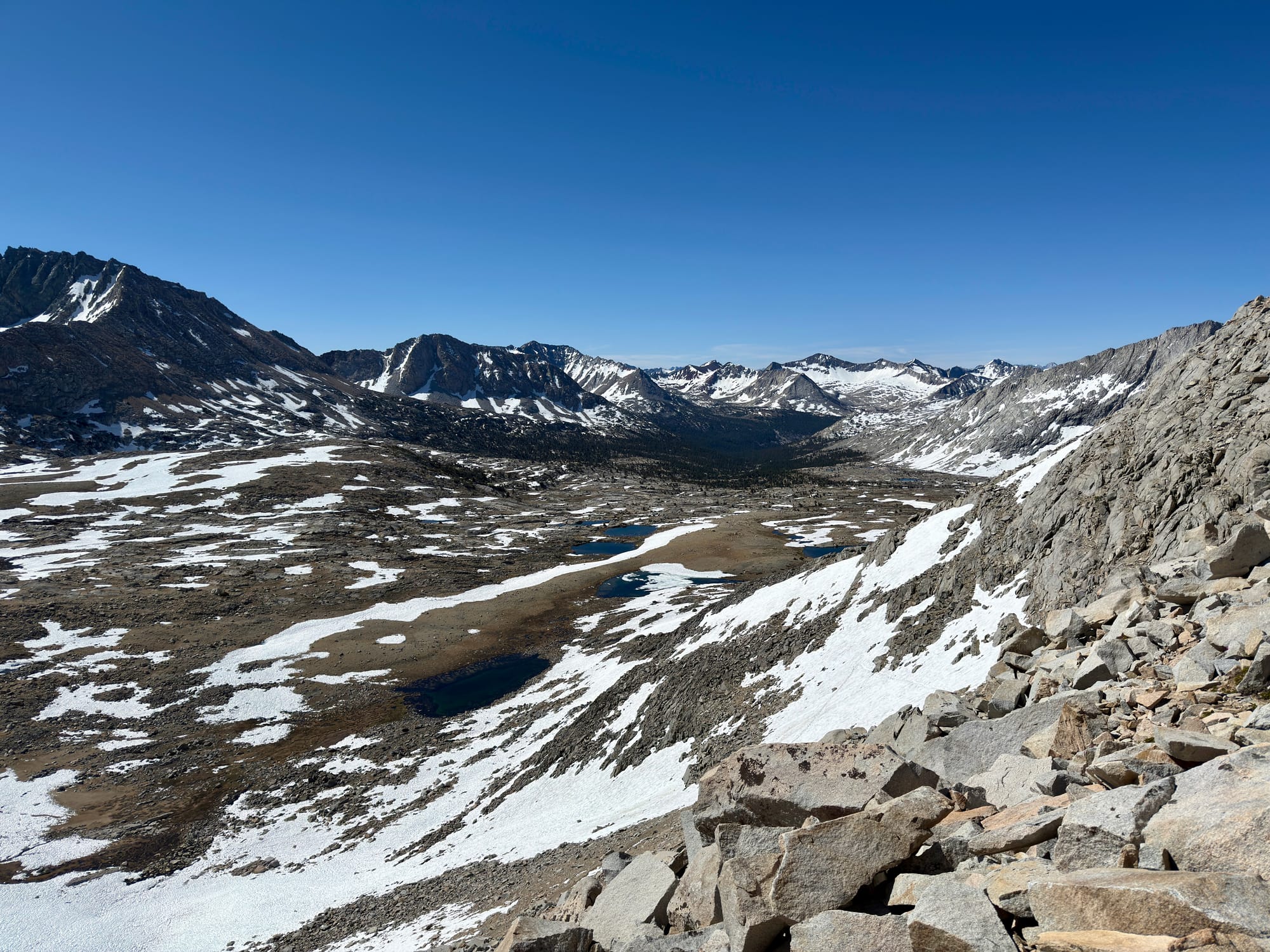

It has been interesting to climb a pass not knowing what you’ll see on the other side.

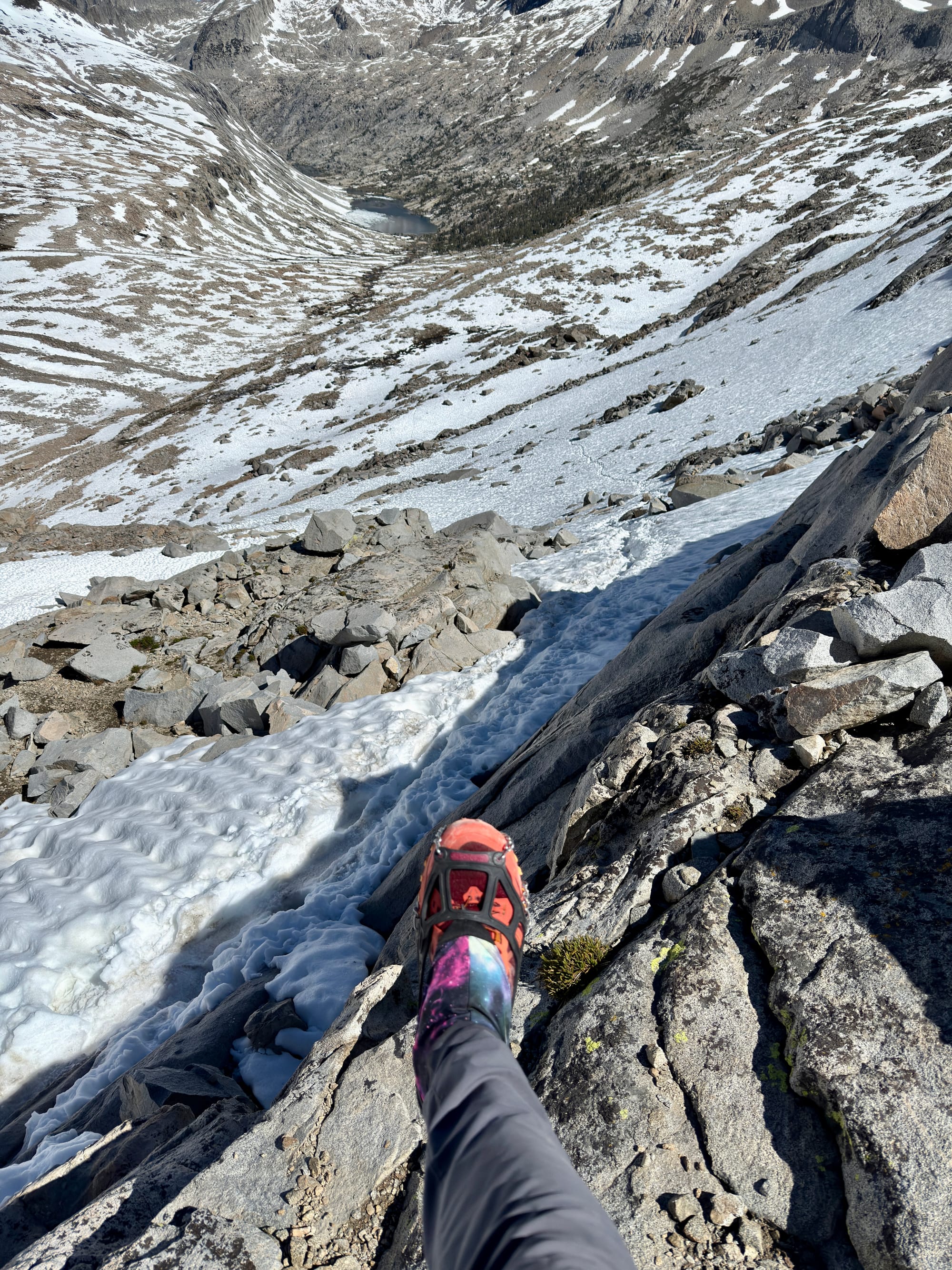
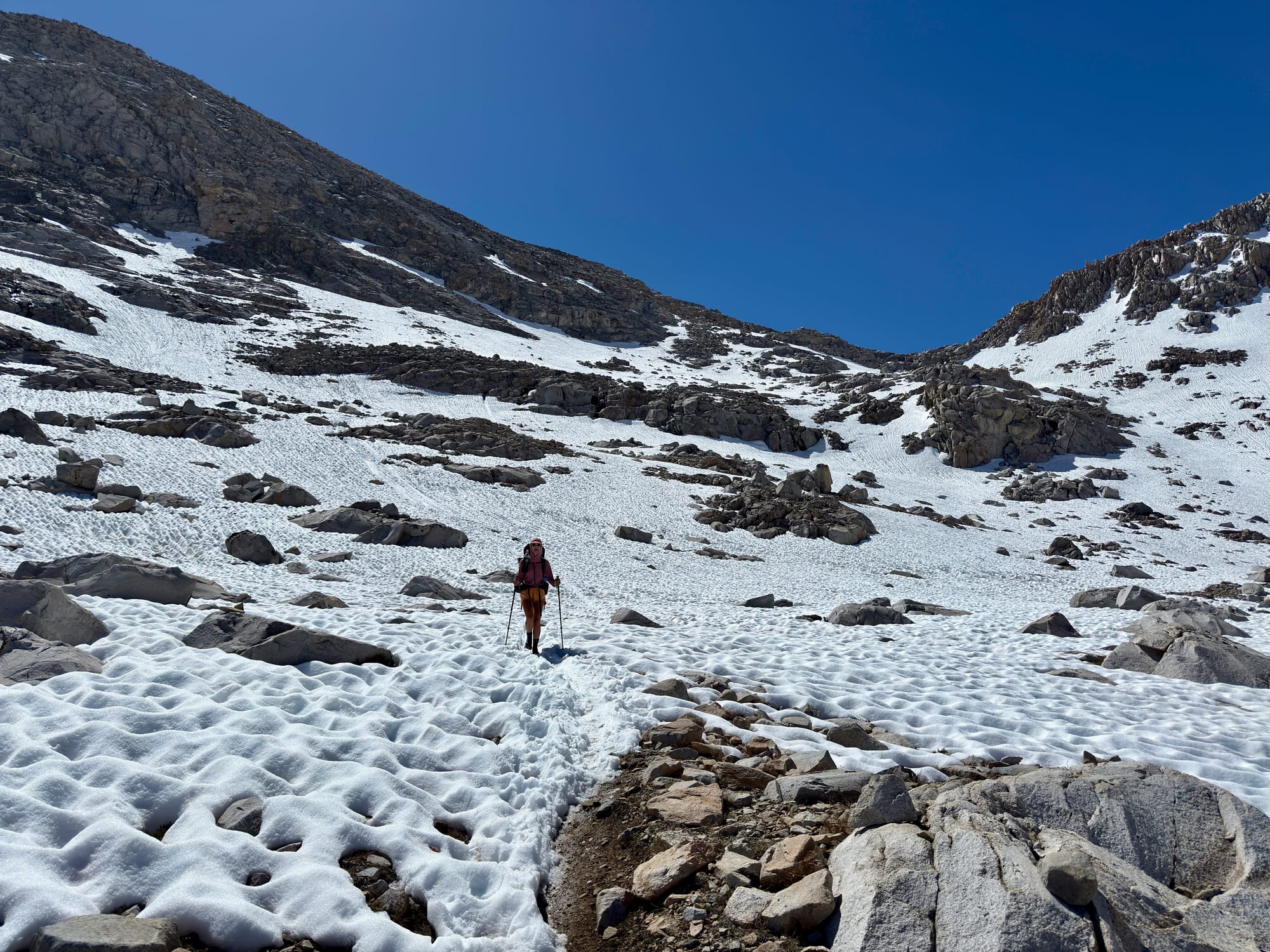
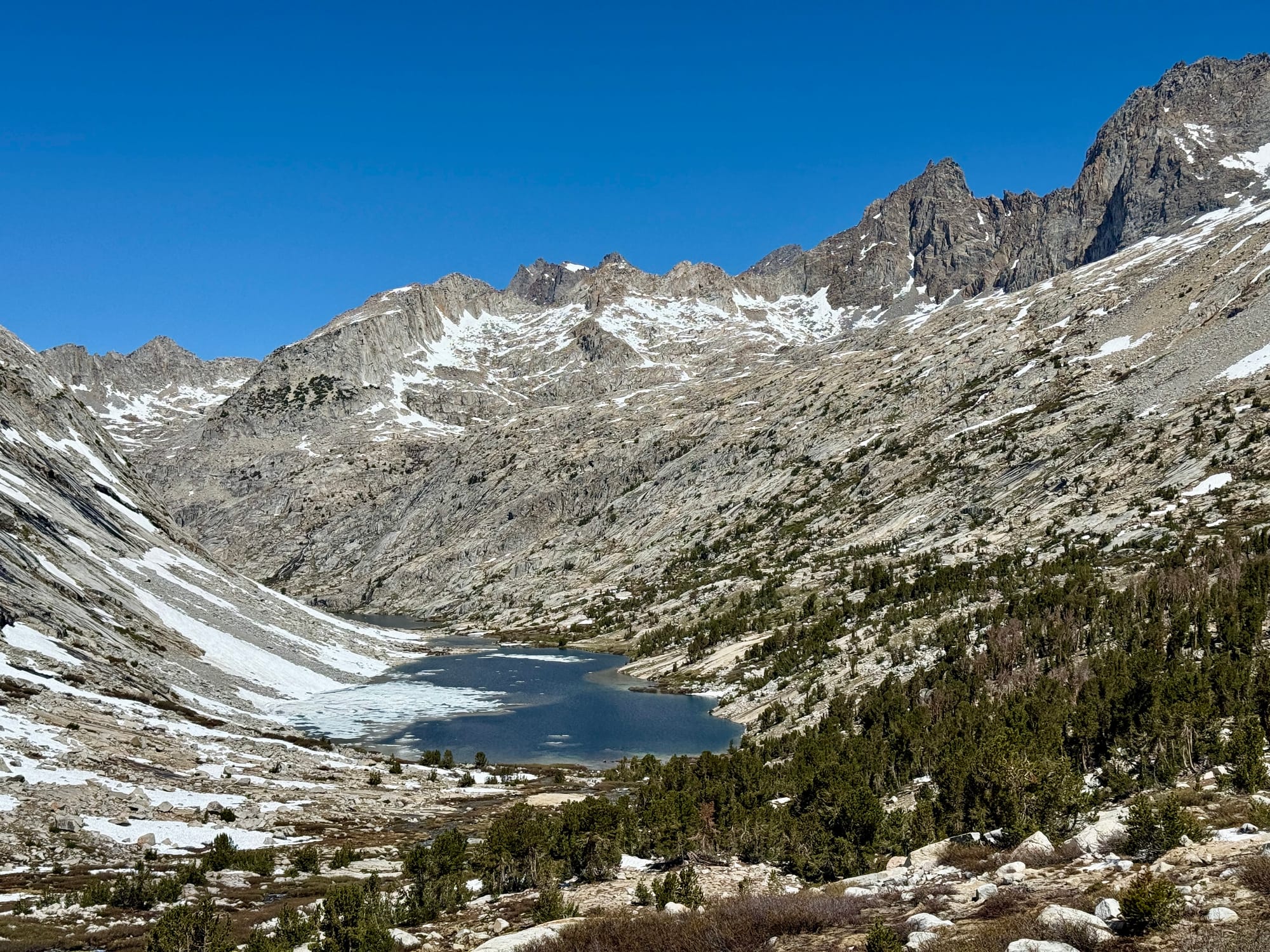
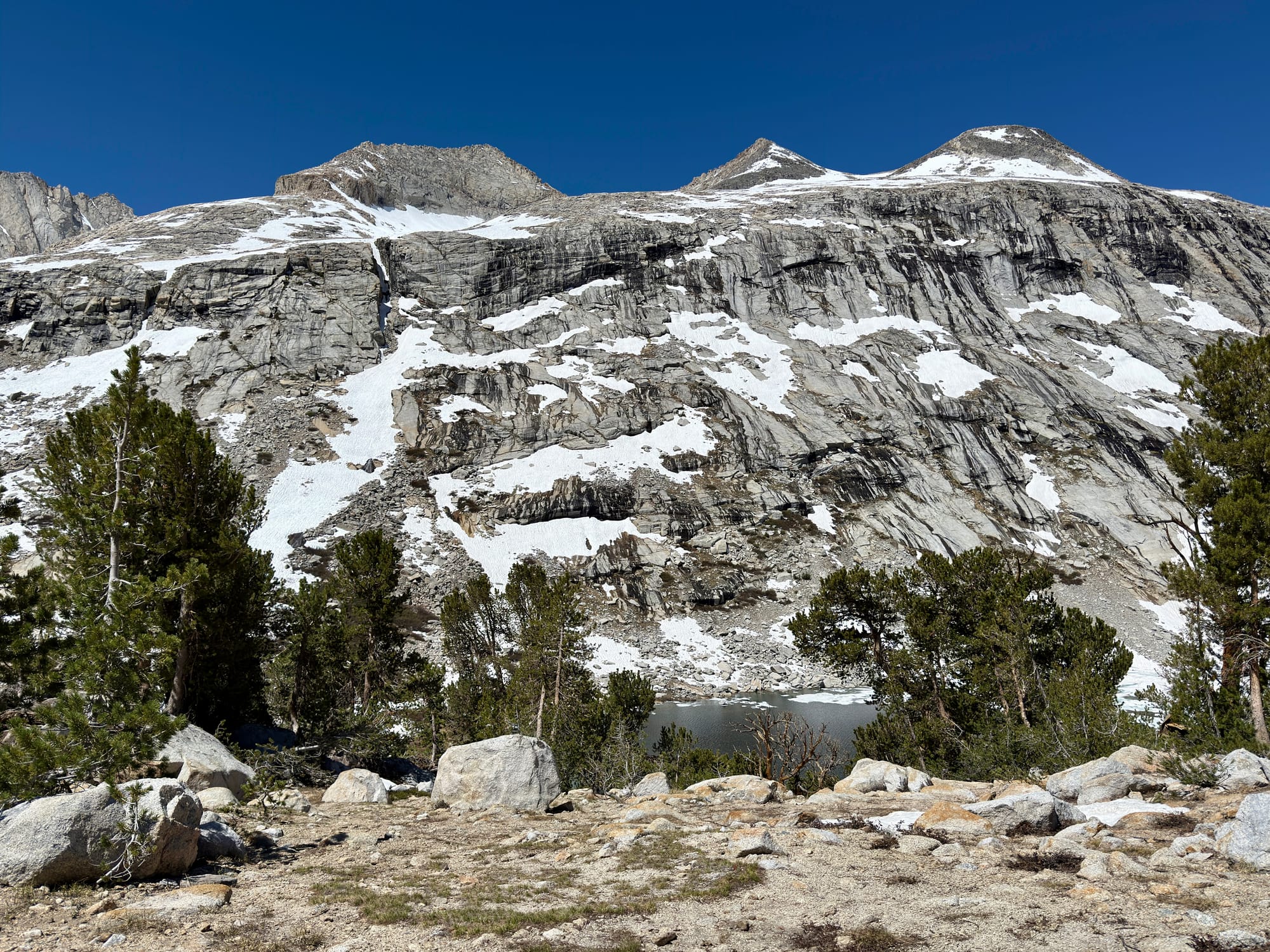
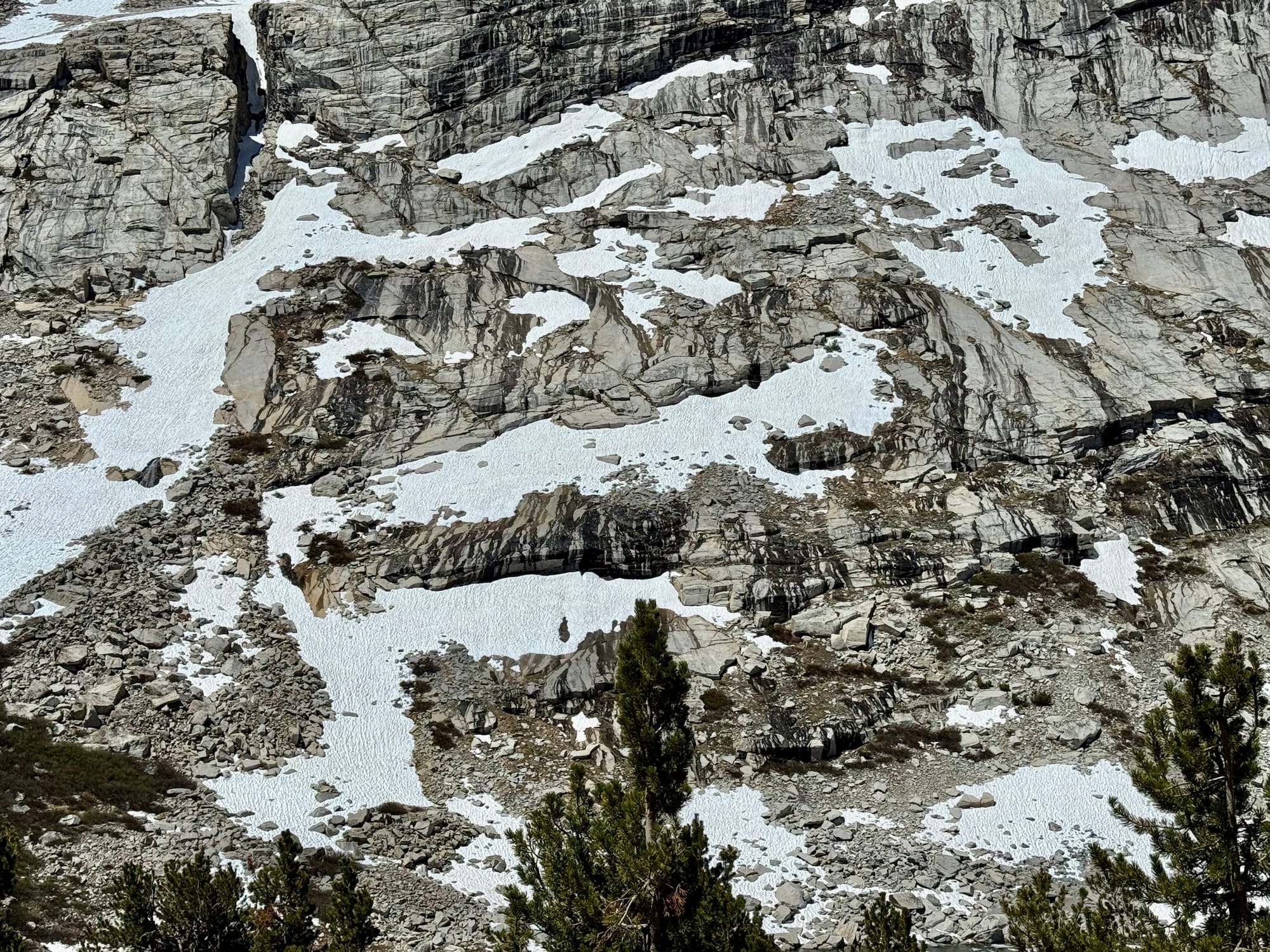

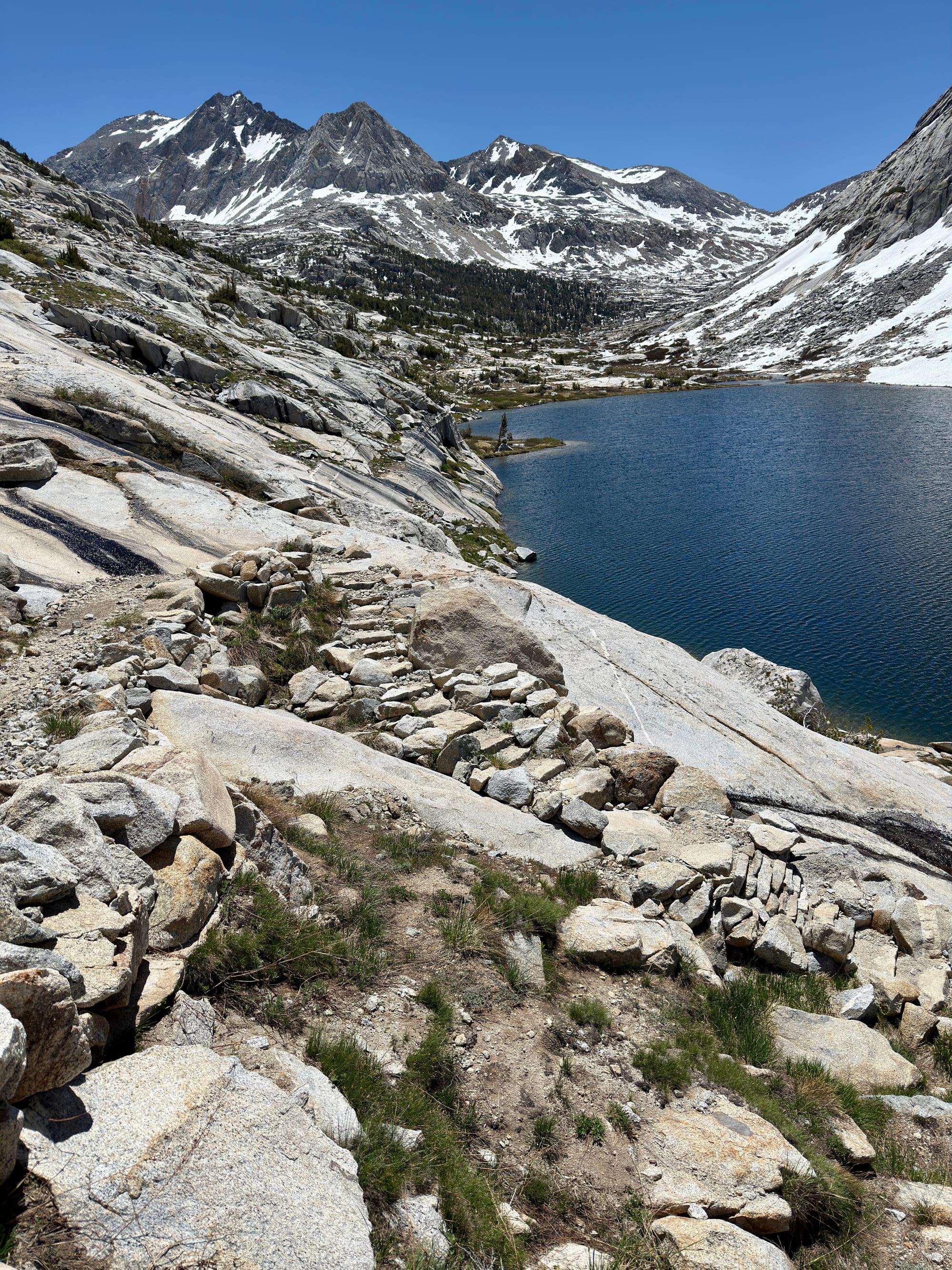
We passed our first park ranger through this section. She asked :
Whether we had permits: yes
Whether we had bear canisters: yes
What we do with our toilet paper: pack it out
She also asked us our start date, which was March 22, and doubtfully asked whether we had actually started on that date (implying that we hadn’t): yes
I didn’t mention that we took a week off following the sudden passing of my mother, or that we are intentionally traversing this trail at a pace to maximize enjoyment. It also felt like a strange question considering that we just traversed a bunch of high passes using microspike cleats and ice axes for many of them and that passing them any earlier was effectively mountaineering and not through-hiking. Oh well. I suppose it’s a good to see an employed, actively patrolling ranger out here at all.
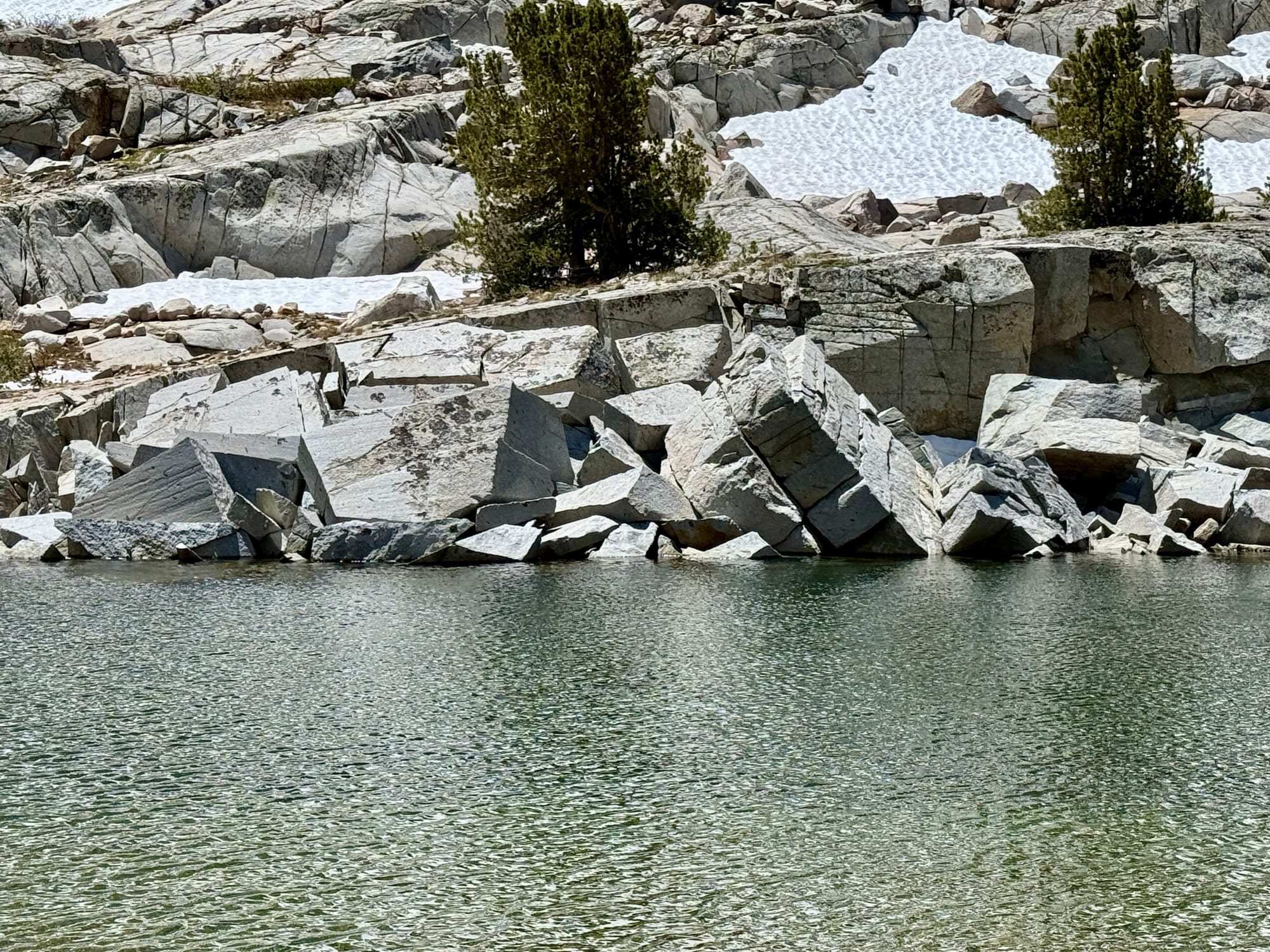
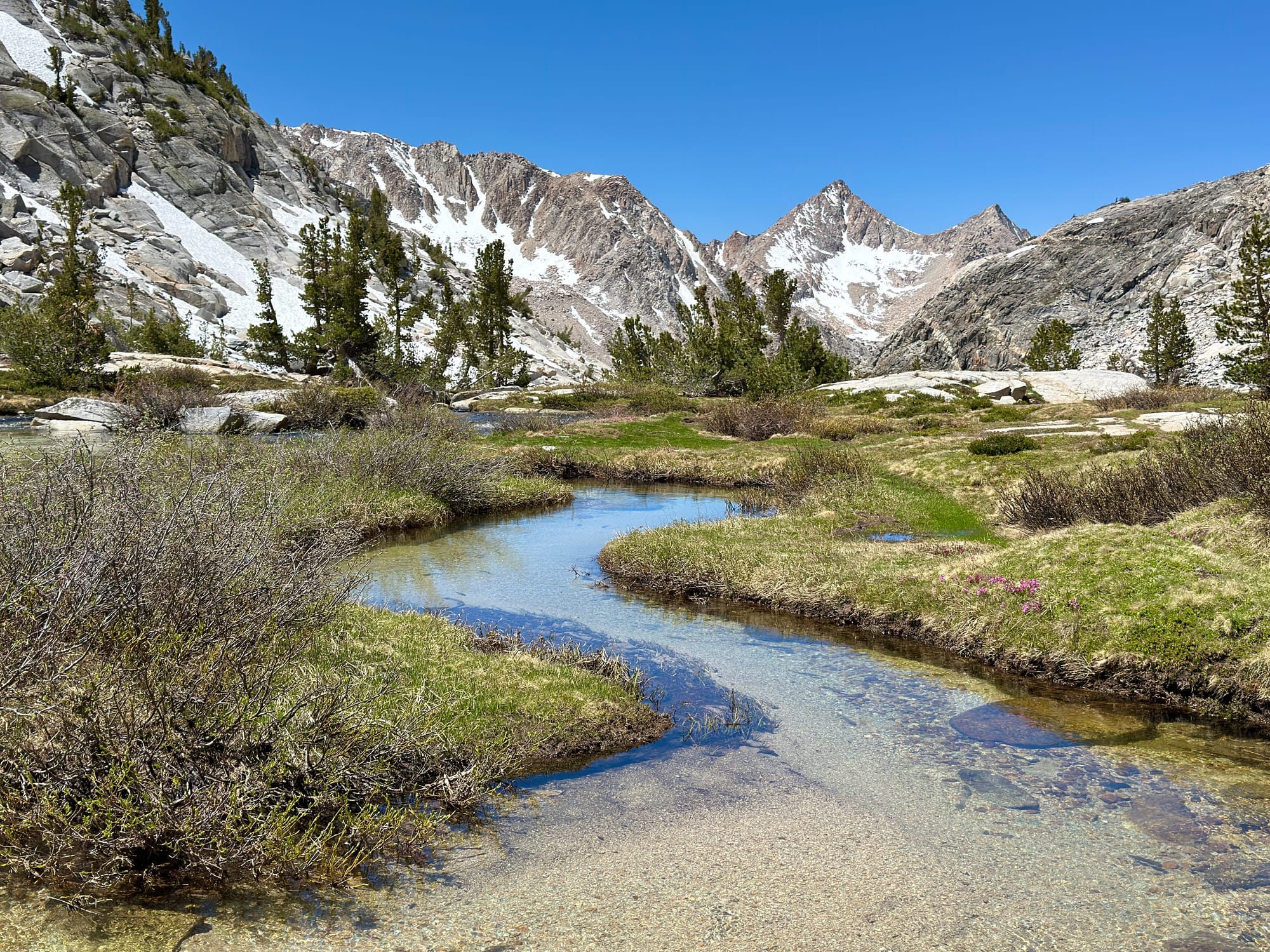
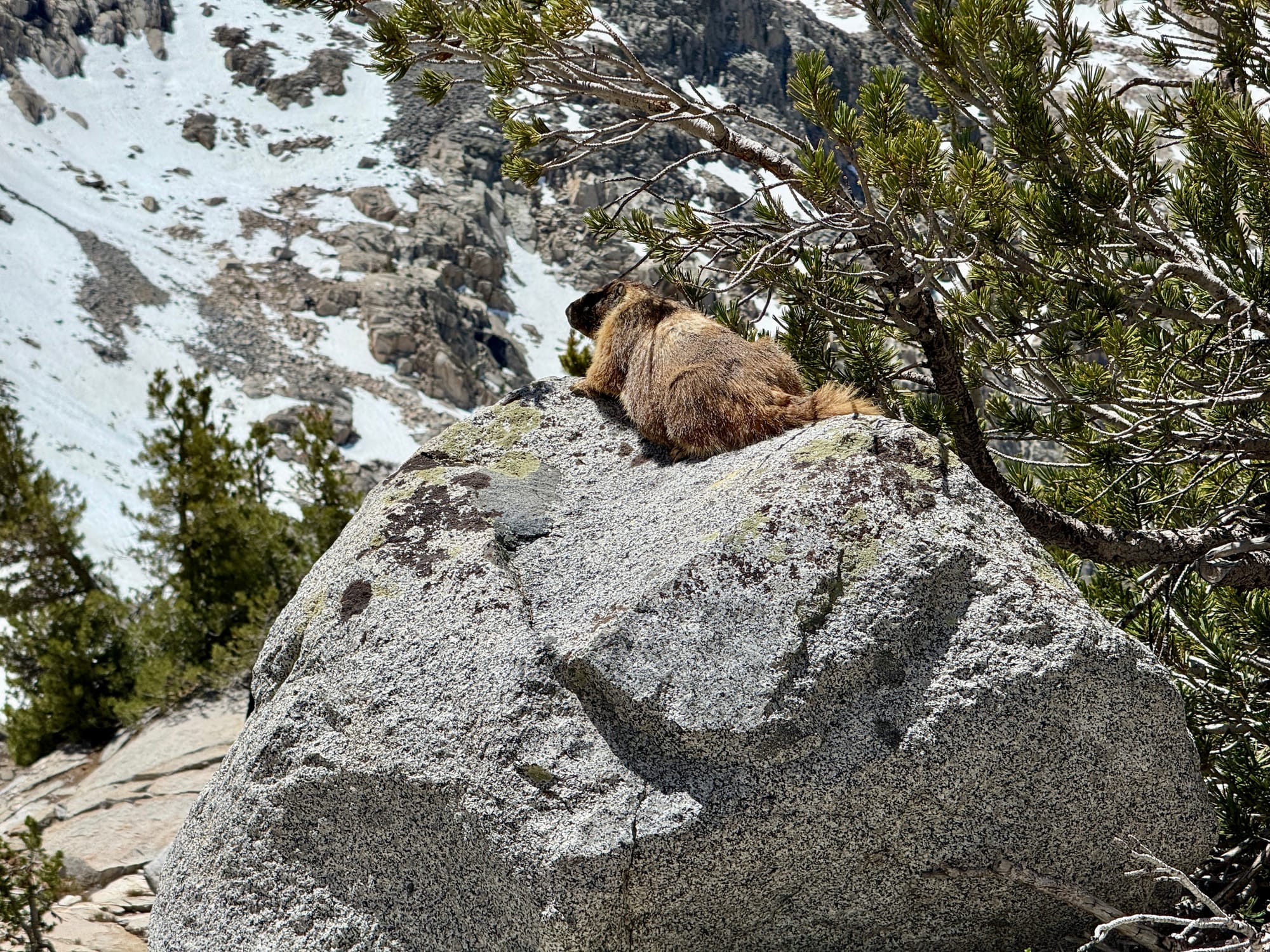
Marmots are hilarious. They love basking in the sun. I would too if I spent all winter freezing my ass off at 12,000 feet.




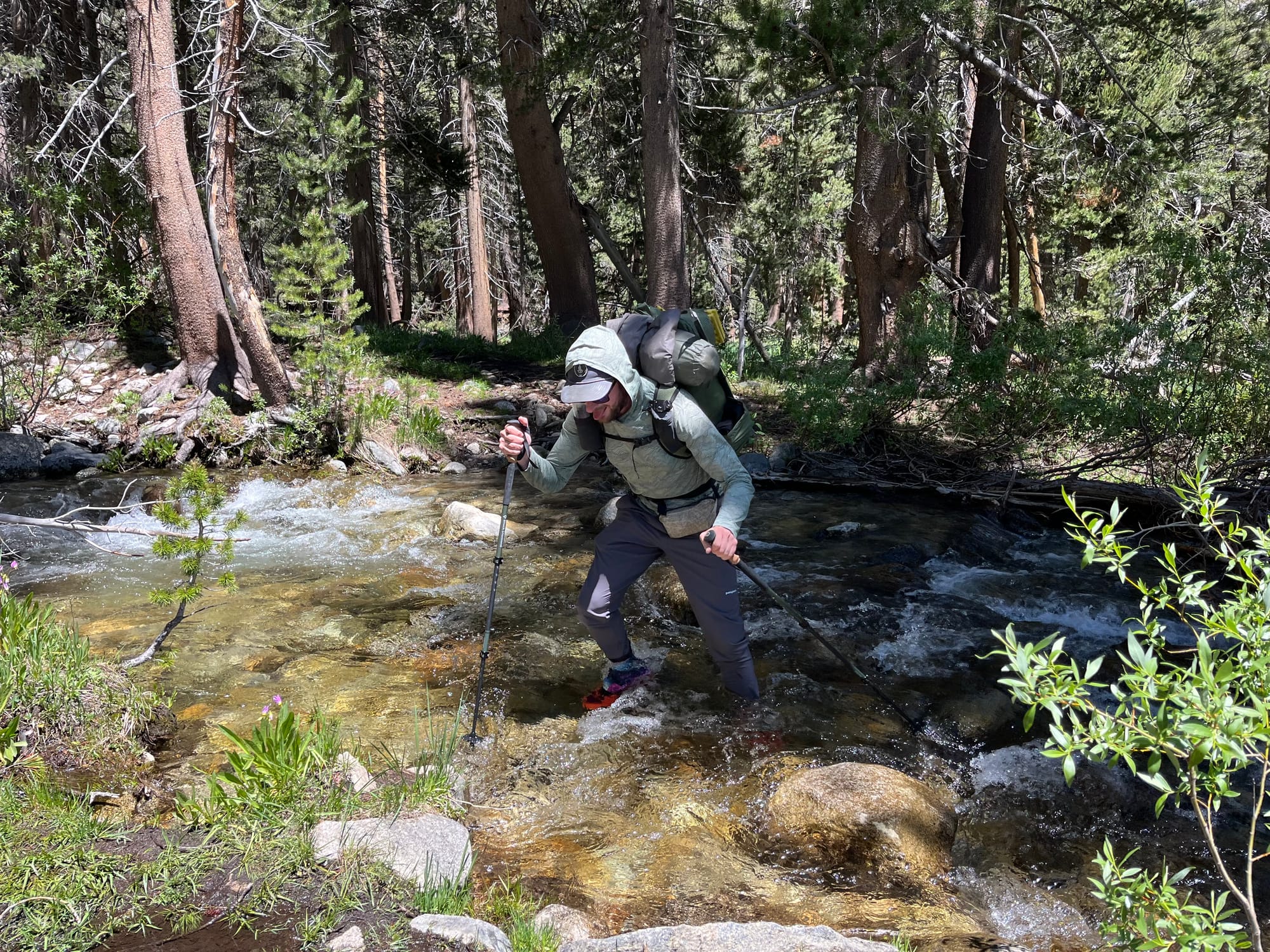
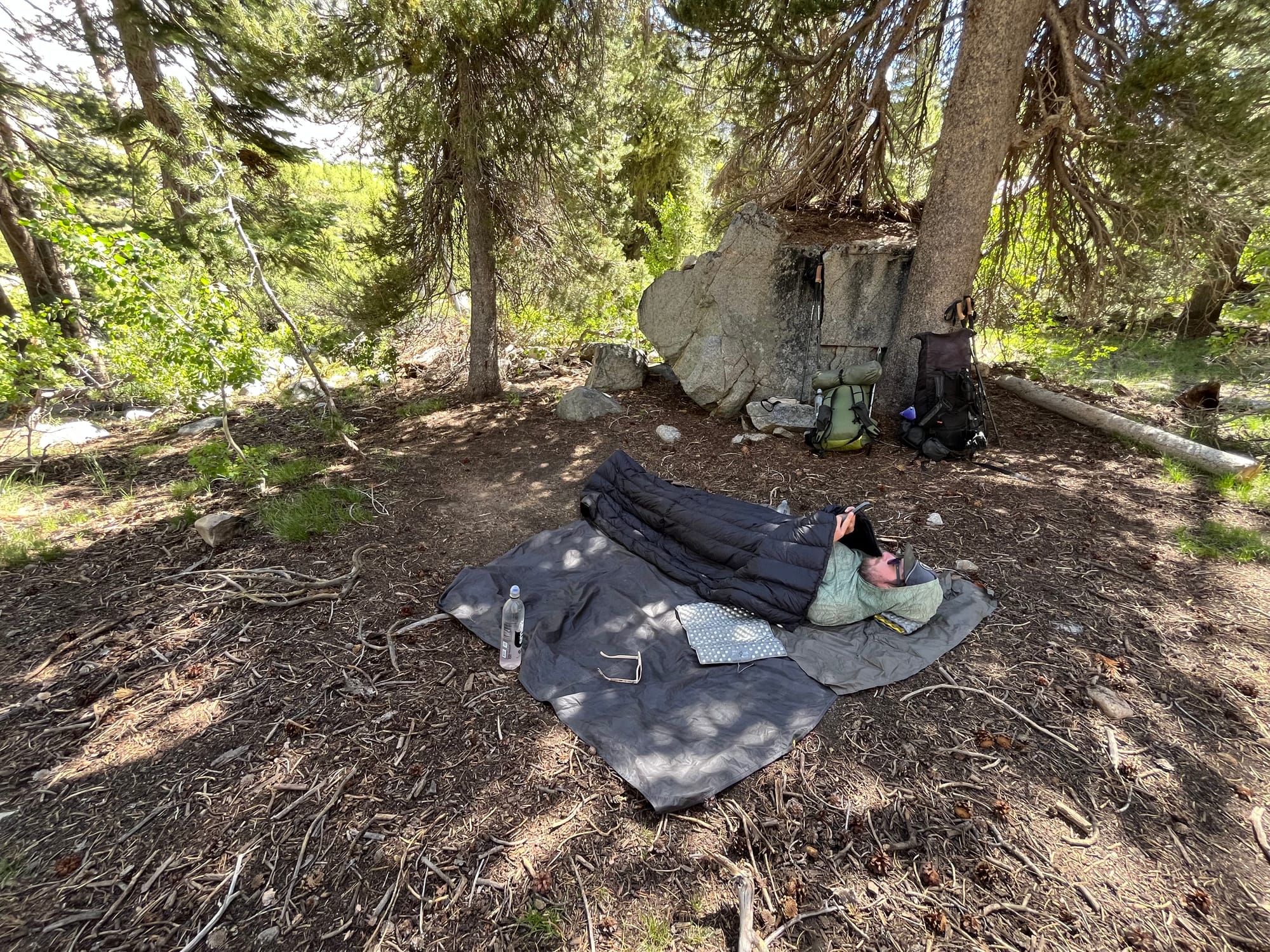
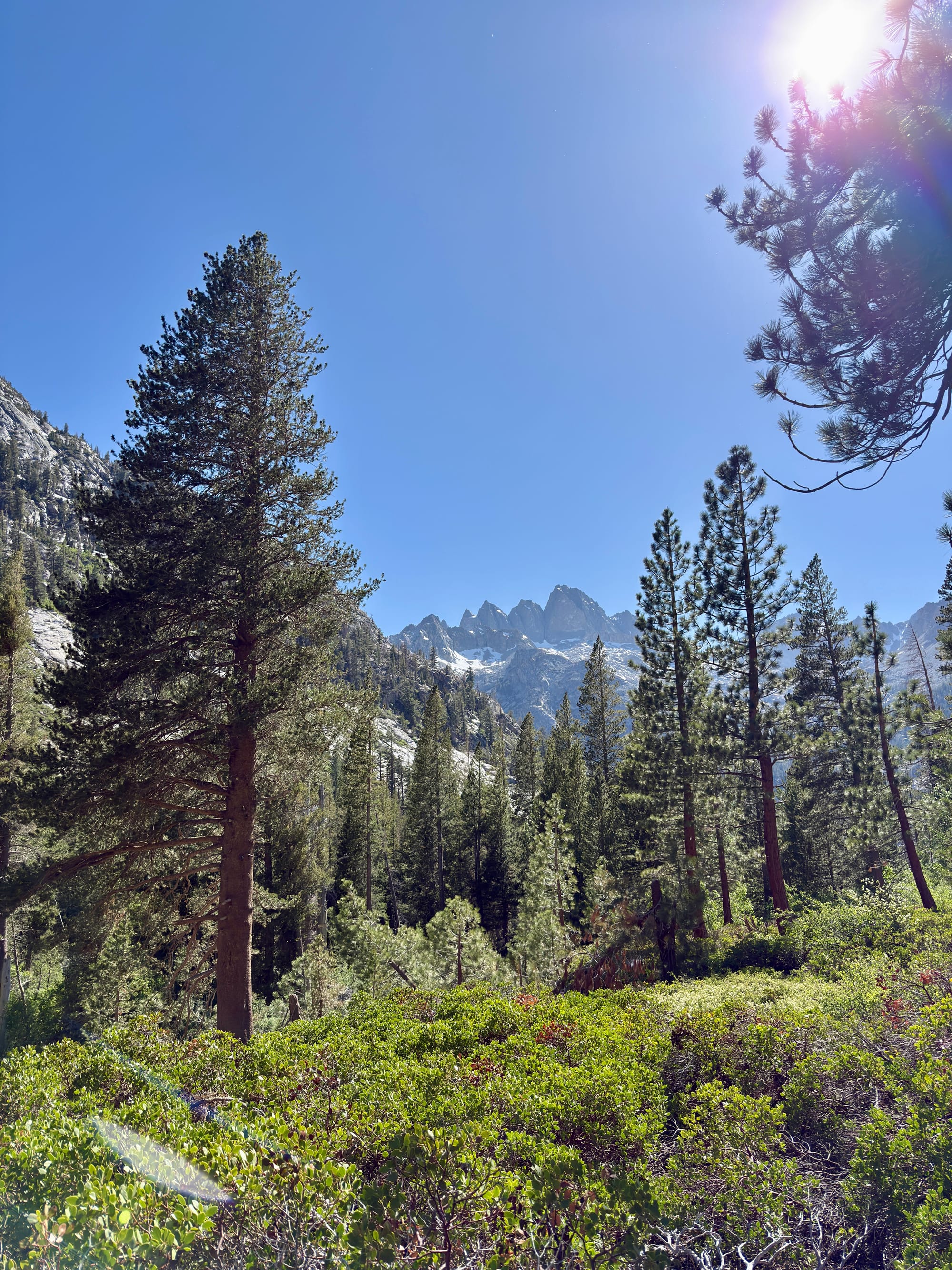
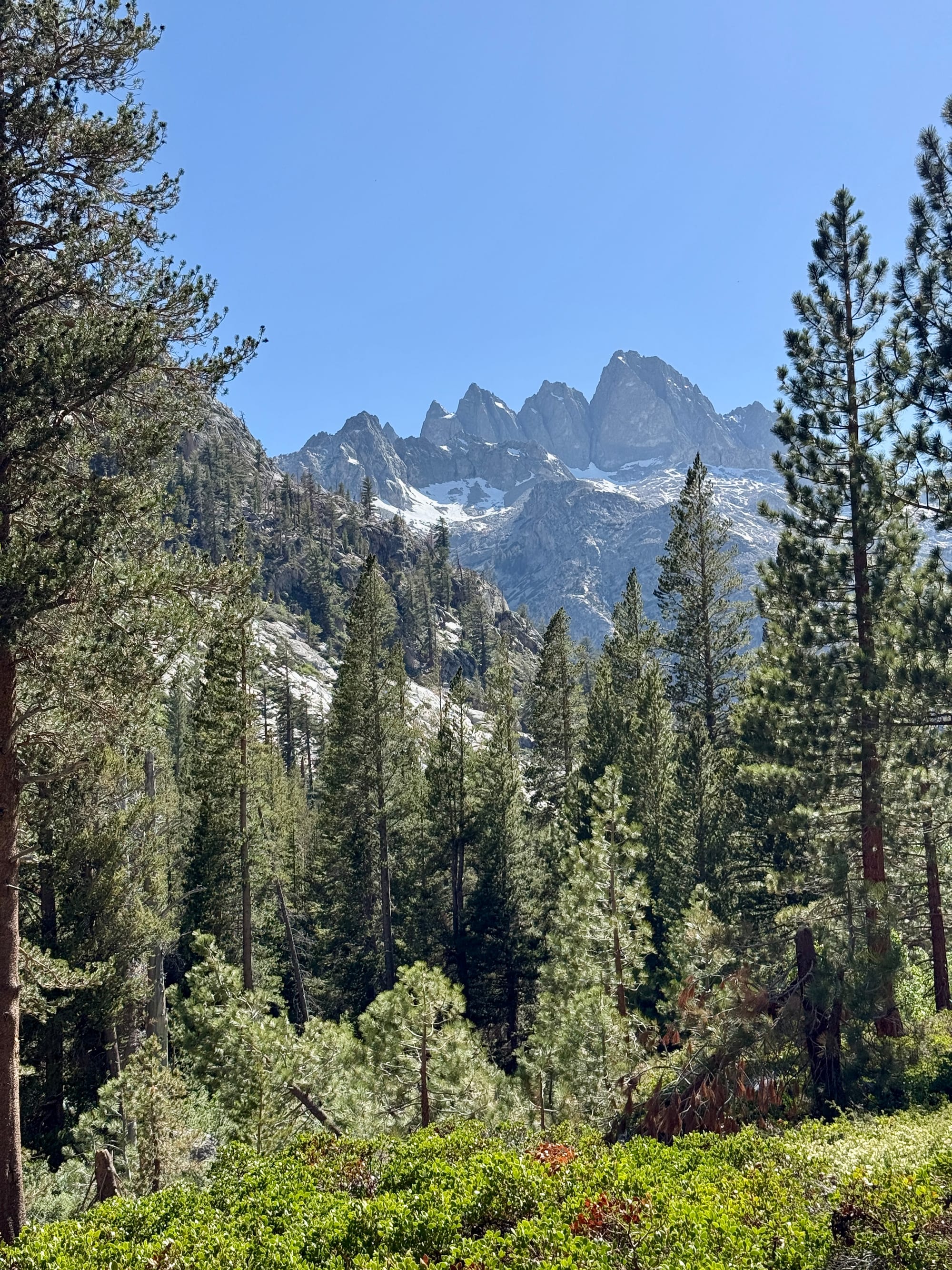
Massive amounts of water coming down Kings River.
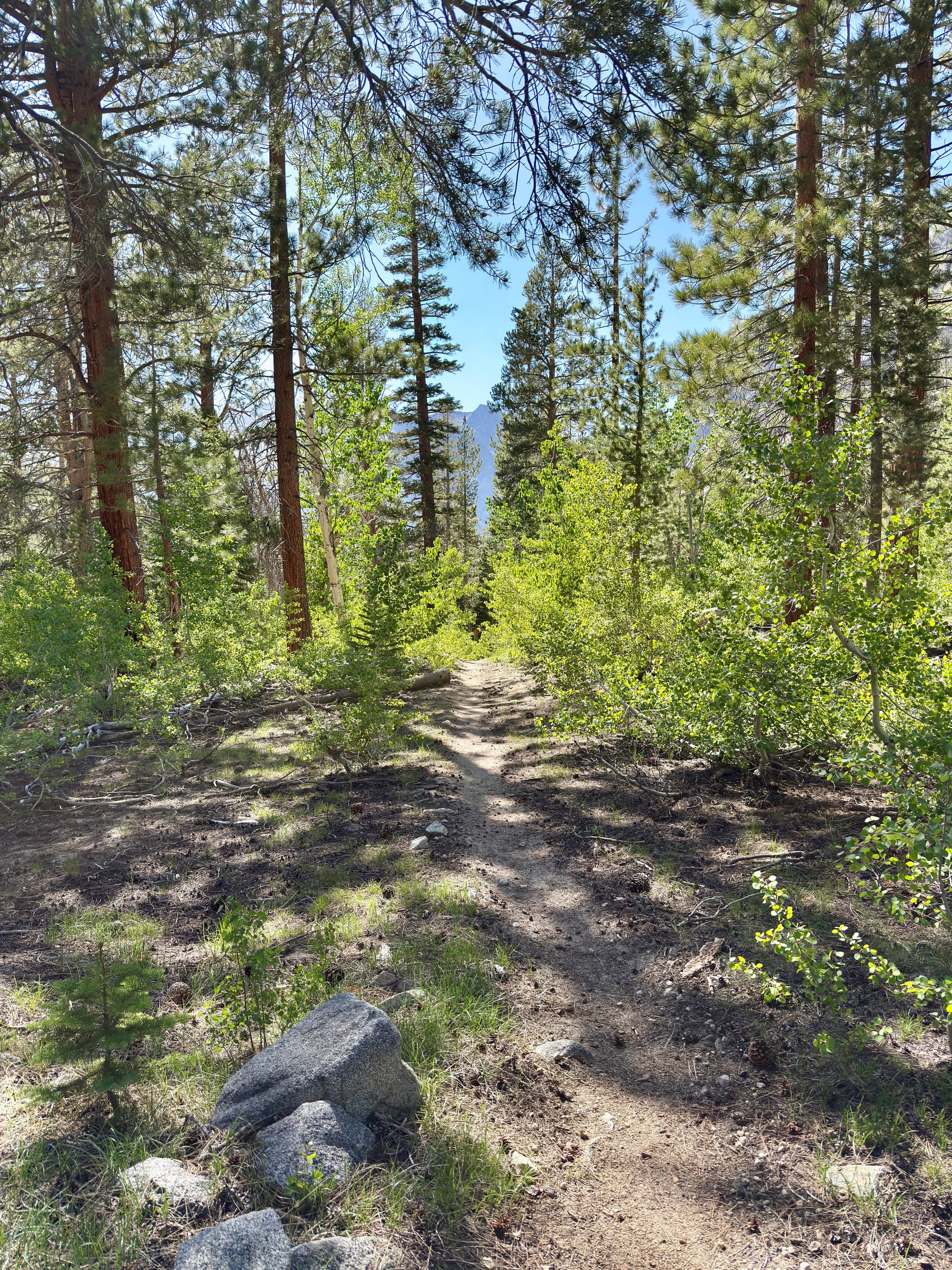
Aspen trees! I bet it is unbelievably pretty through here in the fall.
An Aspen grove called Pando with ~47,000 stems spanning 106 acres in Utah is the largest living organism on earth.
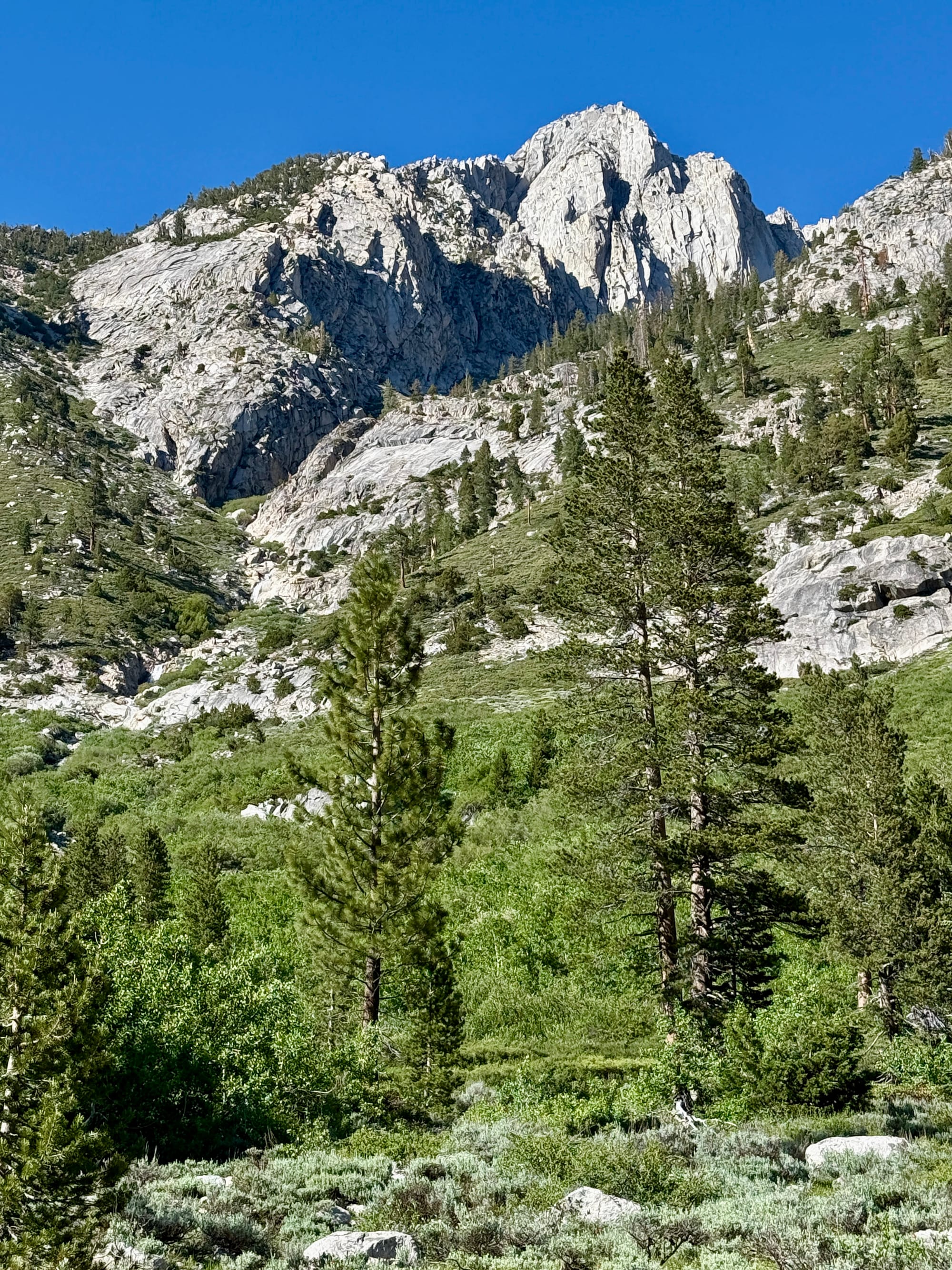
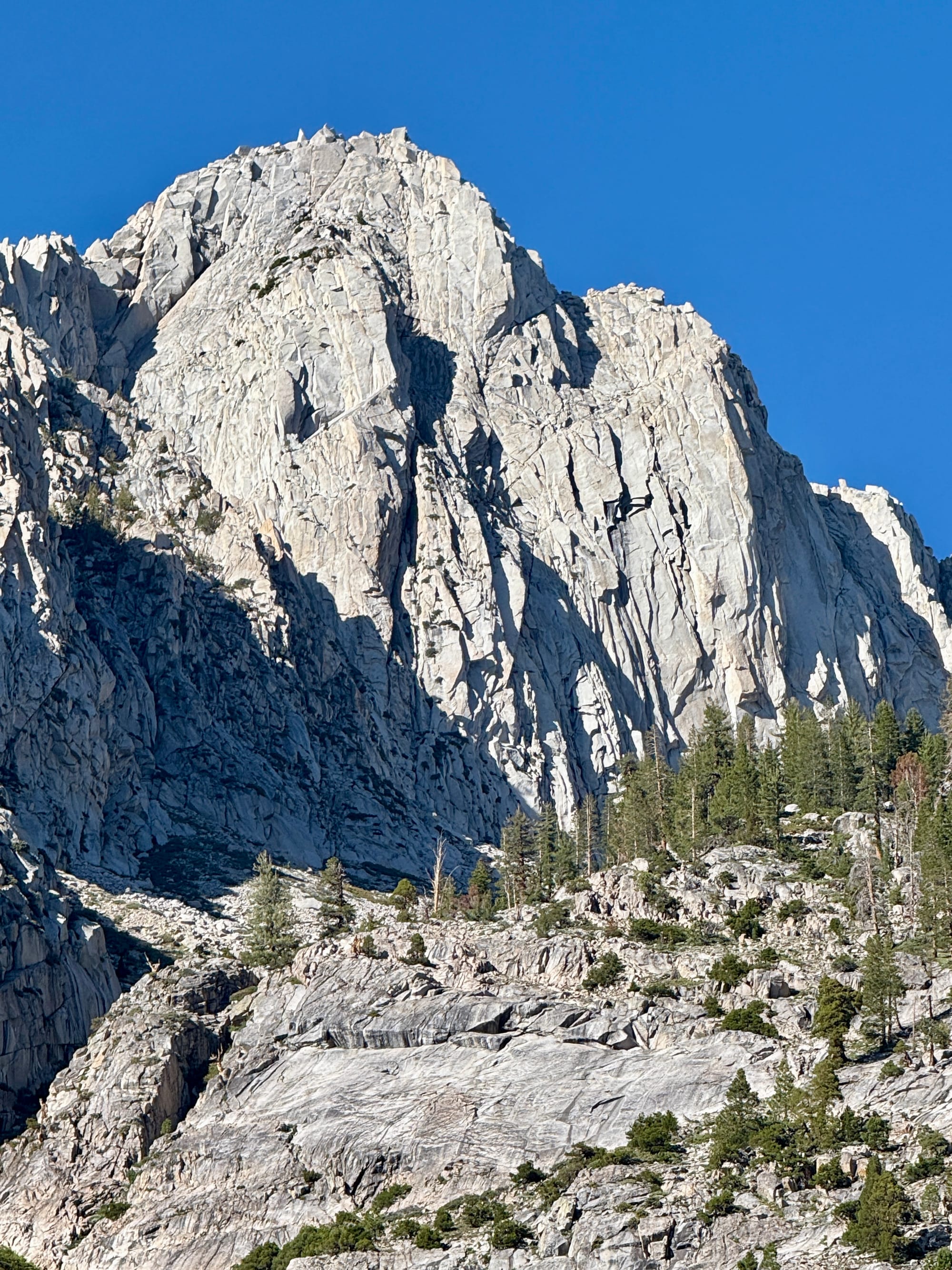
You can’t convince me this rock wasn’t the inspiration for Admiral Ackbar.
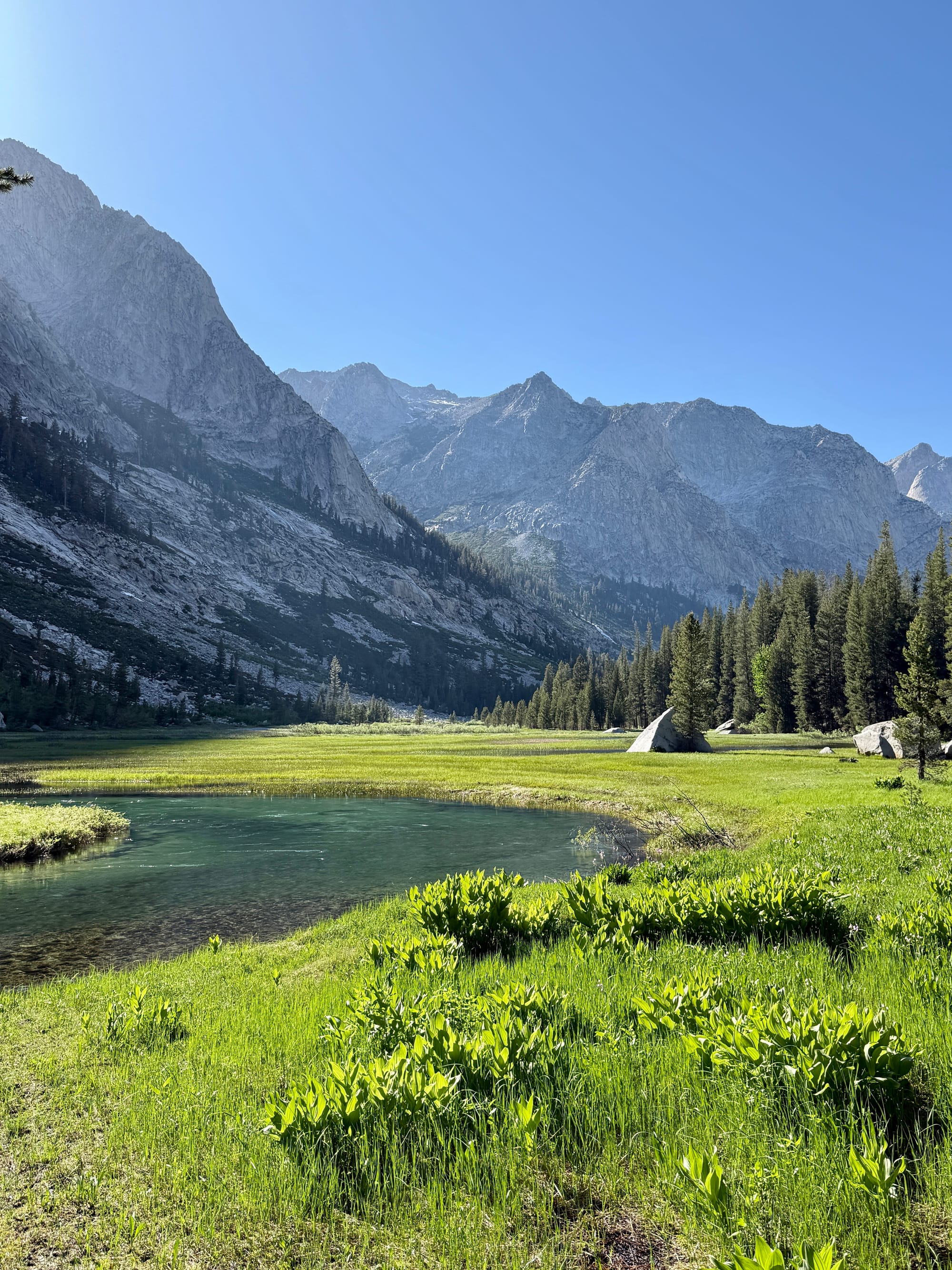
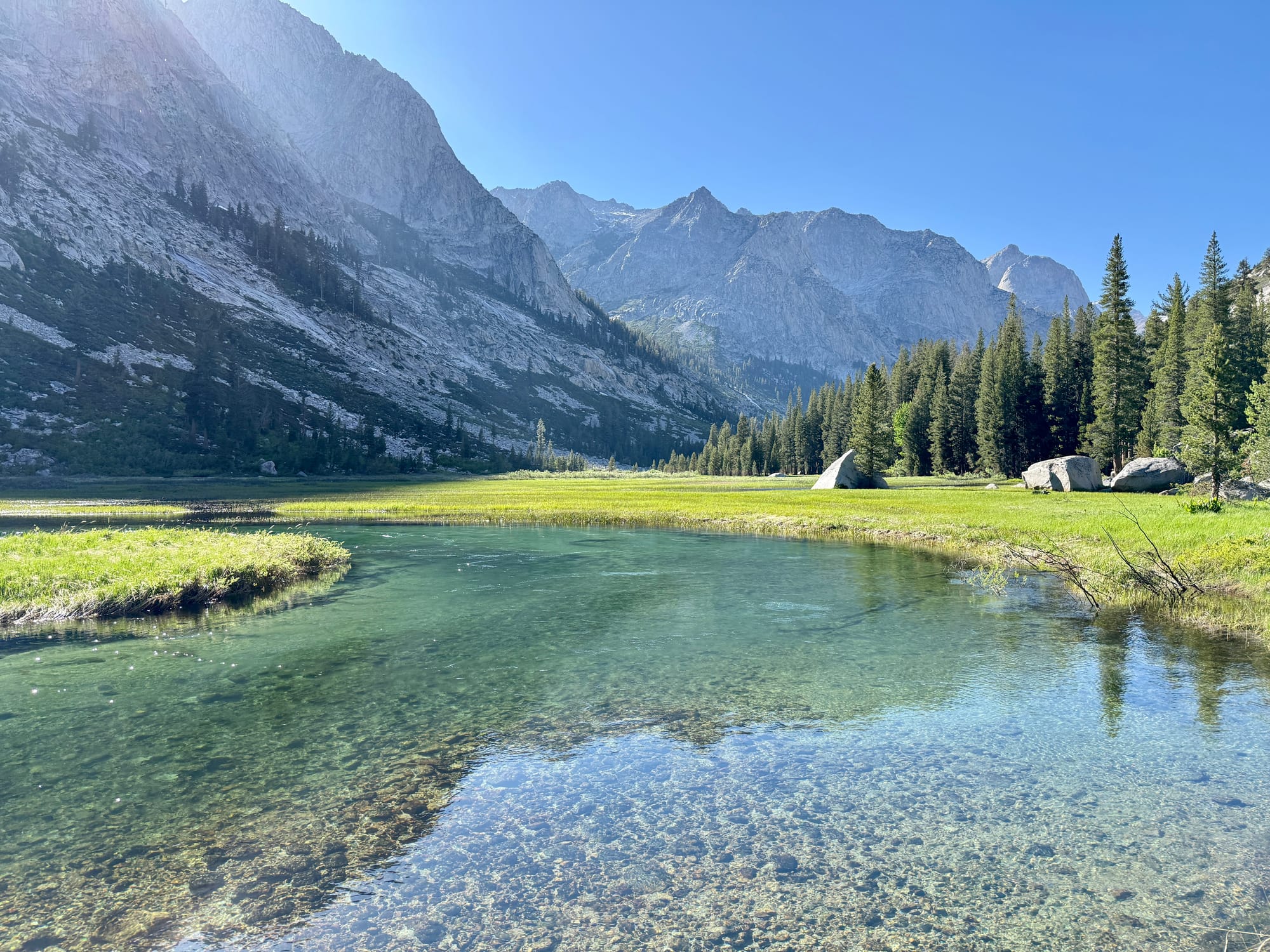
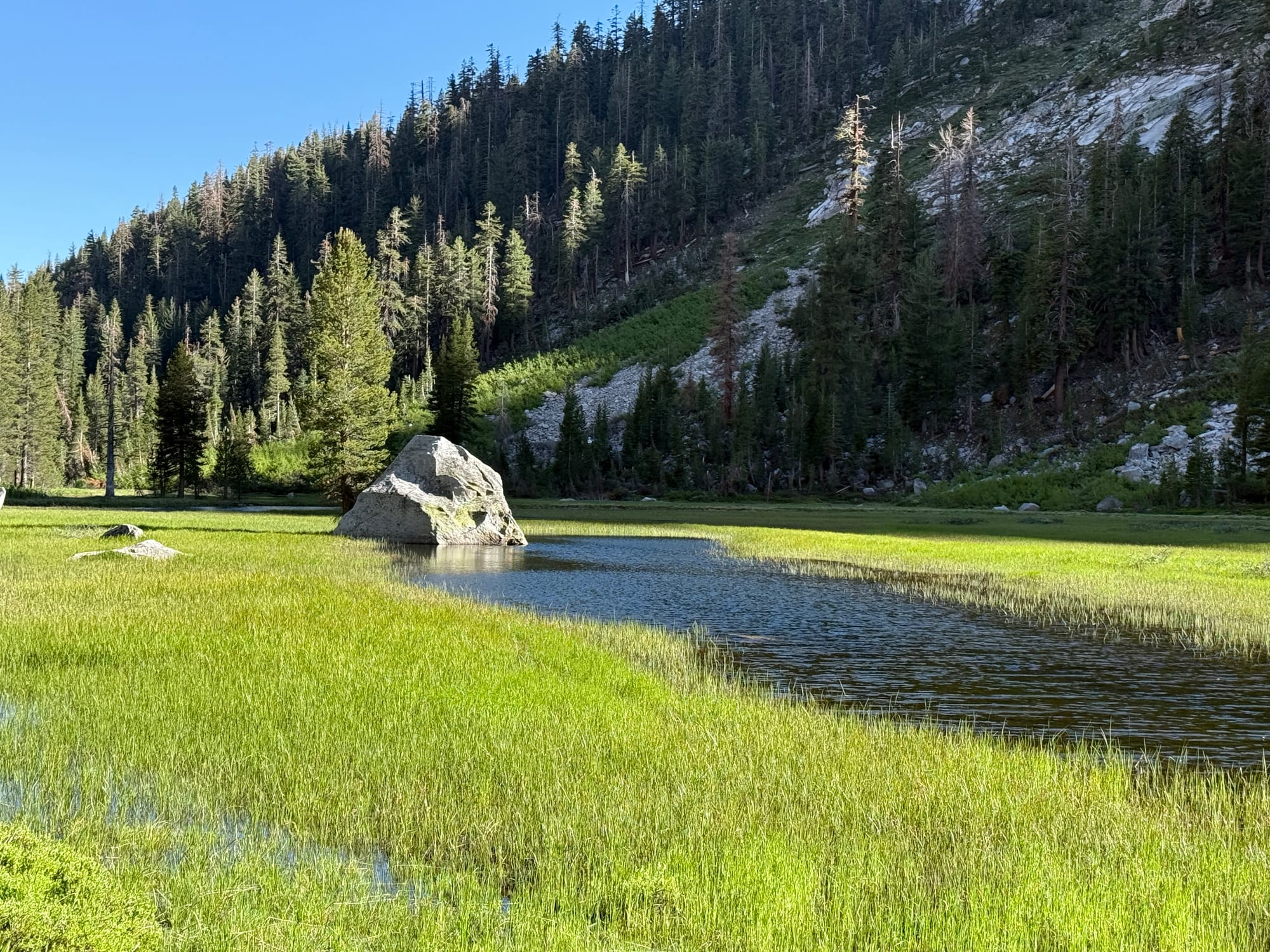
If I fall off the map, I’m probably not dead, I’m just in Grouse Meadow practicing my newfound religion based around this pyramid rock.
While the river was raging a couple miles back, it was as peaceful as can be through the meadow. Judging by the full riverbeds and overflowing crossings, we’re almost certainly traversing these Sierra passes at peak snow melt.
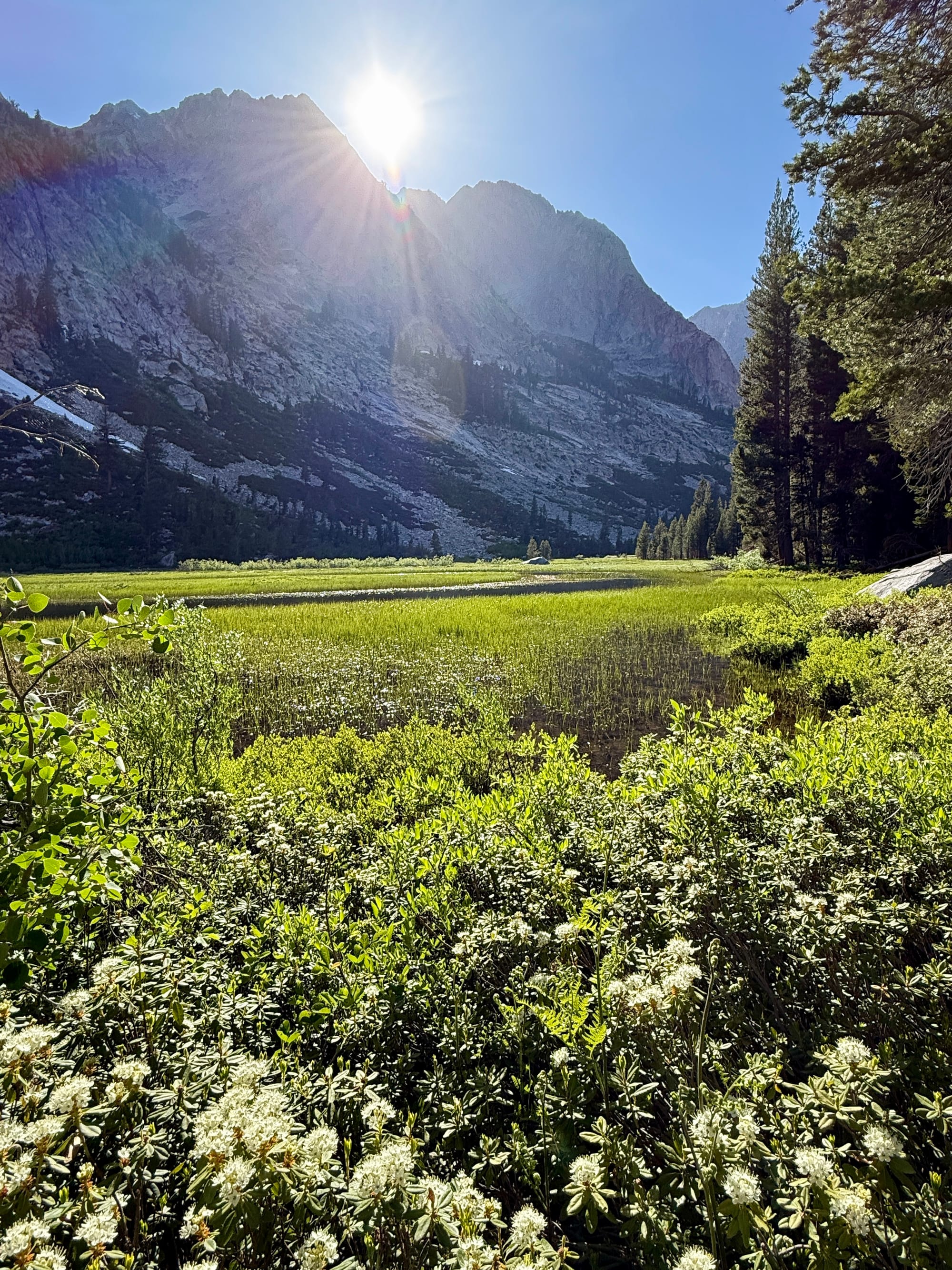
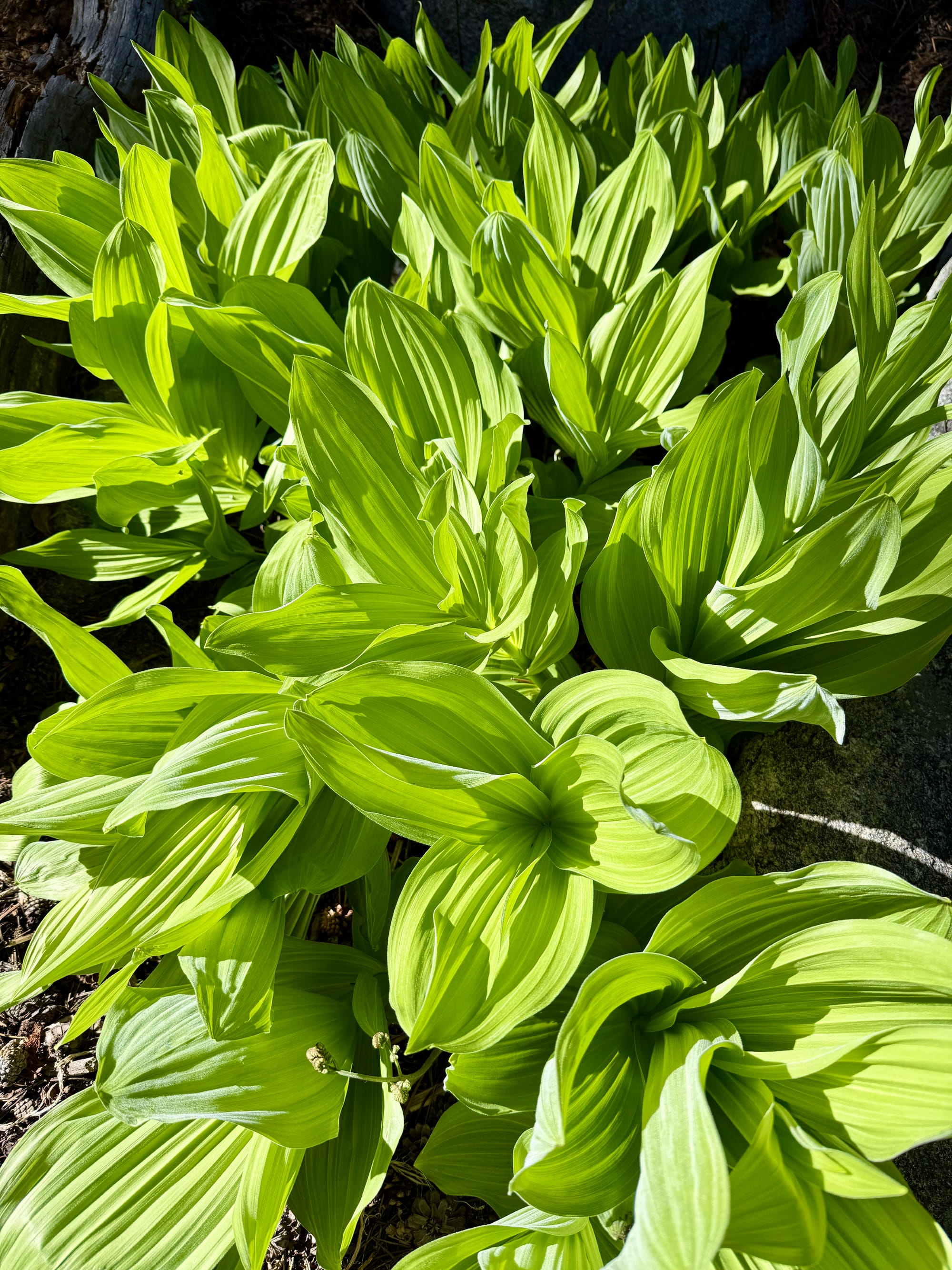
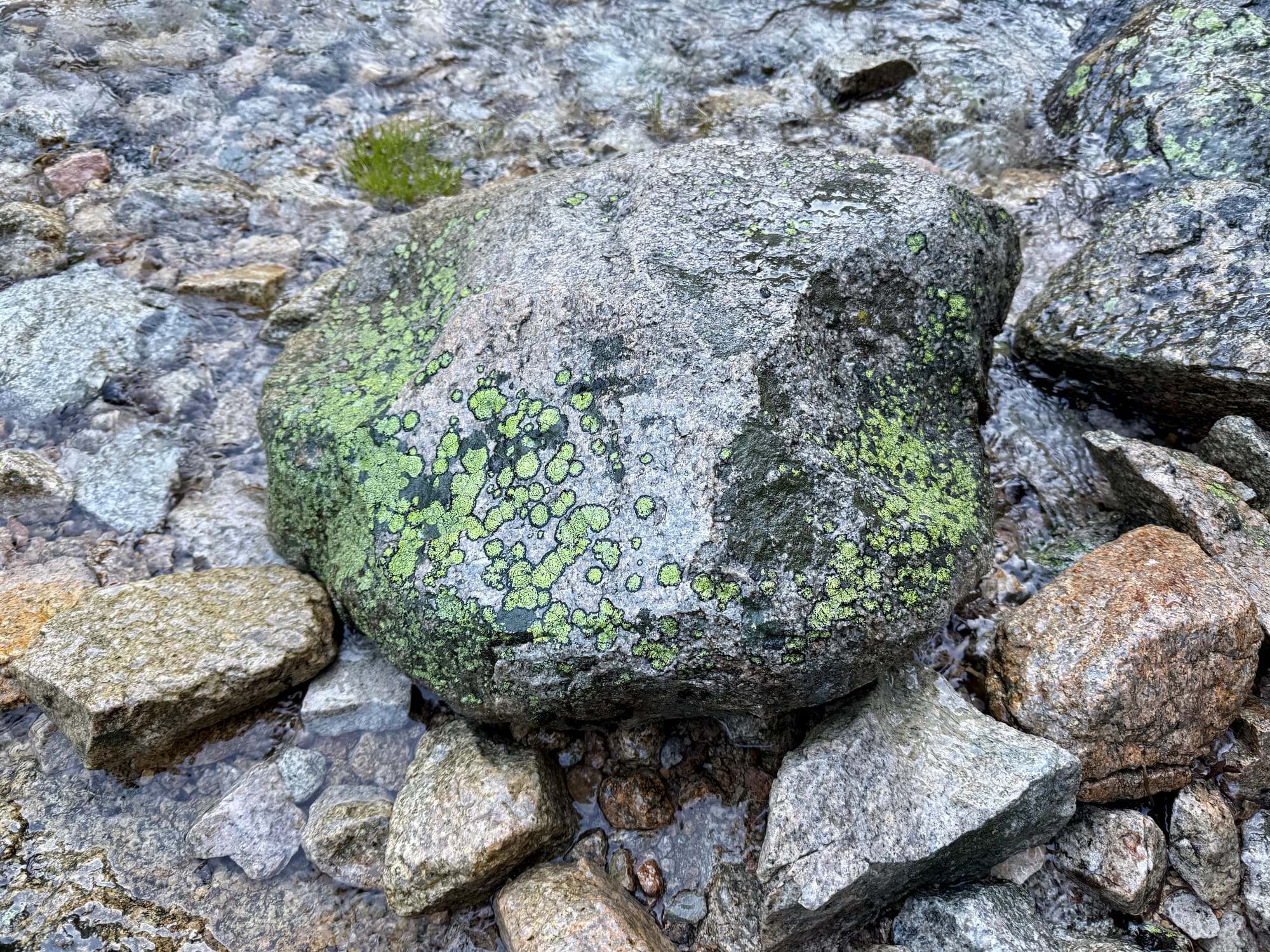
This day was a lifetime highlight - just an unbelievably pretty section of trail.